EVERY PRODUCT BUT HYDRO FOR WHOLESALE STORE
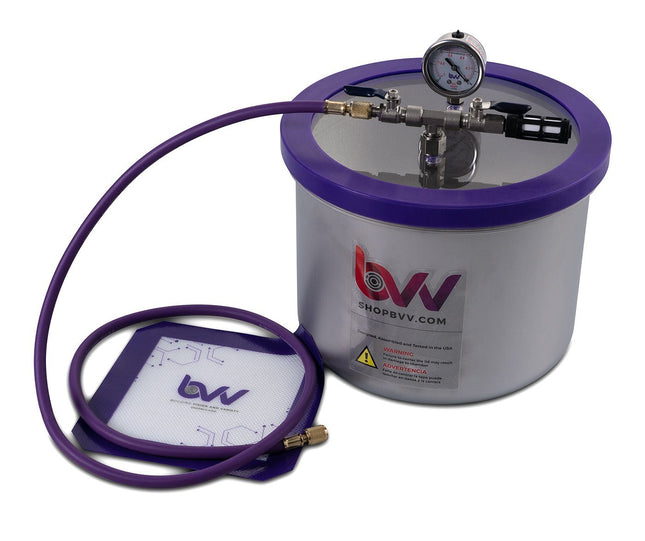
Best Value Vacs 3 Gallon WIDE Stainless Steel Vacuum Chamber
3 Gallon Wide Stainless Steel Vacuum Chamber (Comes with 2 Year Limited Warranty) This is a complete BestValueVac® vacuum chamber setup designed built and 100% tested in Naperville, Illinois. With our unique patent pending gasket design (Patent #9475627) this chamber is sure to last 10,000 uses with proper care and maintenance. The gasket itself is reversible (doubling the life of our system) allowing customers to instantly take it off and flip it over. Every chamber is tested prior to shipping to lose no more than 2.5Hg/24hrs. -Please Refer to these charts for vacuum specifications at altitude and conversions: Vacuum at Altitude Chart Vacuum Conversion Chart Key Features: High Strength Stainless Steel Chamber Highly Durable and Reversible Silicone Gasket Glycerin filled vacuum gauge User friendly vacuum connections that fit most vacuum pumps on the market 50 Micron Air filter for reducing airborne contaminants when releasing the vacuum Silicone vacuum pad 5' of vacuum rated HVAC hose to pull a vacuum. Specification Chamber Material 304 Stainless Steel Gasket Material Silicone Lid Material Acrylic Internal Dimensions (ID) 8" Tall x 10.5" Diameter Vacuum Gauge (Glycerin Filled) InHG (0)-(-30) Manifold Connections 1/4" SAE and 1/4" FNPT Temperature Rating 150°F (65°C) Additional Included Items 5' Purple Vacuum Rated HVAC Hose Platinum Cured Silicone Pad Black 50 Micro Air Filter Compatibility Explanation: BestValueVac® Chambers are not compatible with stabilization resin (i.e. Cactus Juice™, Gator Venom™, Minwax™ etc.), alcohol, ethanol, acetone and acrylic based monomers or polymers.The lid may only be cleaned with soapy water. ShatterVac® chambers are not compatible with stabilization resin (i.e. Cactus Juice™, Gator Venom™, Minwax™ etc.), acetone, acrylic based monomers or polymers. The lid may be cleaned with soapy water and low strength cleaning agents. GlassVac® chambers are compatible with all solvents and stabilization resins. We only recommend and warranty GlassVac® chambers for resin infusion and wood stabilization.The lid may be cleaned with any solvent or cleaning agent. See FAQ at the top for product safety warnings. Pump Warranty Information: Customers using solvents such as stabilization resins (MinWax™, Gator Venom™ etc.), alcohol and other polar solvents must use the vacuum pumps in conjunction with a cold trap for evacuations in excess of 5 minutes. (Exludes Cactus Juice™) If the consumer is using the pump for prolonged periods of time exceeding 5 minutes we require that a cold trap is used or the pump warranty is void. These stabilization resins have the ability to break down the internal components of the pump that are plastic resulting in a seized motor voiding all warranties. When evacuation exceeds 5 minutes these solvents begin to vaporize and then re-condense in the vacuum pump reservoir. Once enough solvent re-condenses in the pump displacing the oil the plastic internal components may begin to warp, melt or seize. The use of a cold trap will condense the vapors prior to making their way to the vacuum pump preventing pump damage due to excessive use. Furthermore, Minwax Wood Hardener™ is not to be used with any vacuum pumps, EVER. (A seized motor will result within the first use.) To prevent these issues from happening to your process, change the Oil after each vacuum pump use, Even if the use time is only 5min. For shipping info including Import/Export details visit our Shipping link at the bottom of the page.
$208.37
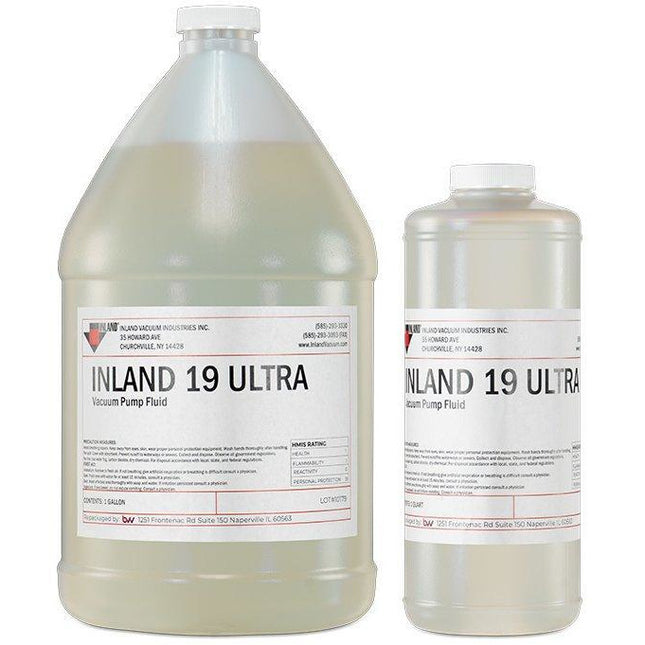
Inland 19 ULTRA® Semi-Synthetic Vacuum Pump Oil
Inland 19 ULTRA® Semi-Synthetic Vacuum Pump Oil Disclaimer: Spigots/Faucets are only compatible with 5 Gallon Jugs and must be purchased separately Inland ULTRA® products are semi-synthetic hydrocarbon fluids designed to endure thermal and chemical stresses much better than standard vacuum pump fluids. The ultra-refined process eliminates nitrogen, sulfur, oxygen, and aromatic hydrocarbons, leaving a clear base stock virtually free of impurities. The additive package will not volatize under thermal stress; the antioxidant will stay in solution and bond up to four times as many radicals as other antioxidants, extending the life of the pump and the fluid. Inland 19 ULTRA® MSDS Properties: Good Thermal Stability Oxidation Resistant Hydrotreated Low Vapor Pressure Long Fluid Life Areas of Application: Mass Spectrometry Electron Microscopy thin Film Sputtering Vacuum Distillation and impregnation UHV Surface Analysis Vacuum Furnaces and Heat Treatment EB Welding Vacuum Tube Evacuation Vacuum Metallization Chemical Pumping Specification Inland 19 ULTRA Vapor Pressure at 25ºC (torr) <1x10-6 Boiling Point at .01 torr (ºC) 166 Viscosity at 40ºC (cSt) 55 Pour Point (ºC) -10 Flash Point (ºC) 247 Fire Point (ºC) Density at 25ºC (g/ml) 0.86 Color clear
$37.76 - $2,692.05
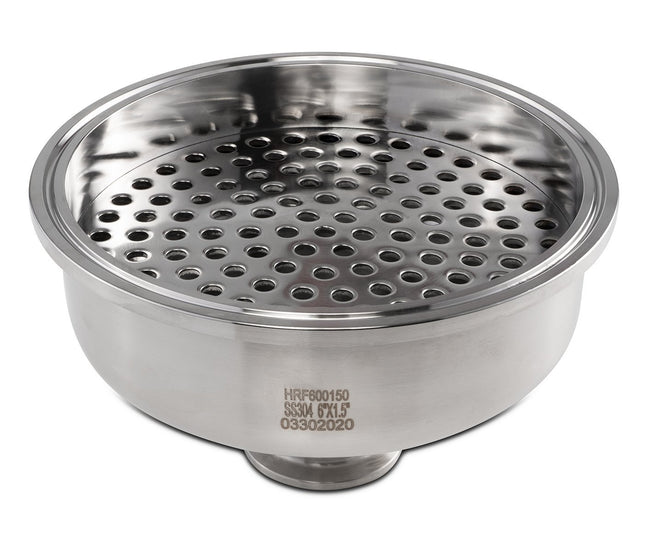
Hemispherical Reducer with Filter Plate
Hemispherical Filter Plate Reducer This hemispherical reducer has a built-in filter plate. This unique design allows the user to save even more space by combining a filter plate ANDhemispherical reducer. Made out of 304 stainless steel the filter plate is welded into the hemispherical reducer and has Tri-Clamp connections on both ends.
$46.15 - $124.46
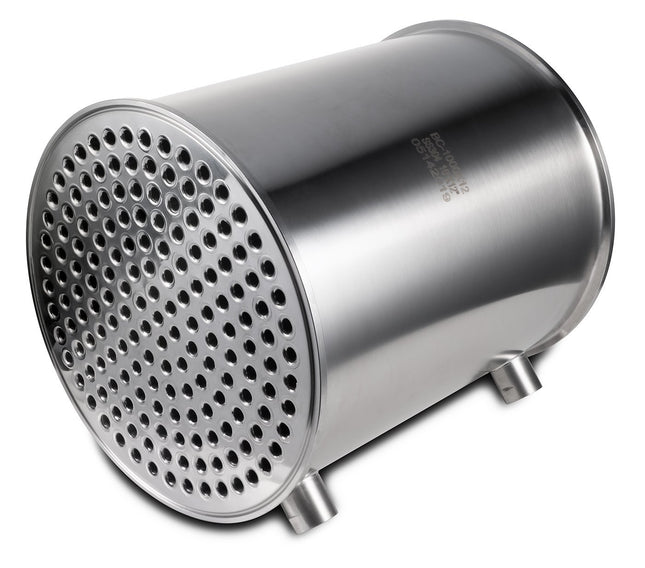
Baffled Condenser
Baffled Tri-Clamp Condenser This 304 Stainless Steel Tri-Clamp condenser allows the user to condense hot vapors and solvent while running an extraction system or use it as a heat exchanger if needed. It features internal baffles in the system allowing for better overall heat exchange, Tri-Clamp connections on each end and (2) 1/2" FNPT Ports on the side to allow various connections the user may need. The inside diameter of the tubing measures 7.5mm. BVV™ Baffled Tri-Clamp - Data Sheet
$293.68 - $3,356.32

KF O-ring
KF O-ring O-ring features a depth stop for clamping with Viton O-ring also fits the following high vacuum connections. NW16 NW25 NW40 NW50
$10.49 - $25.17
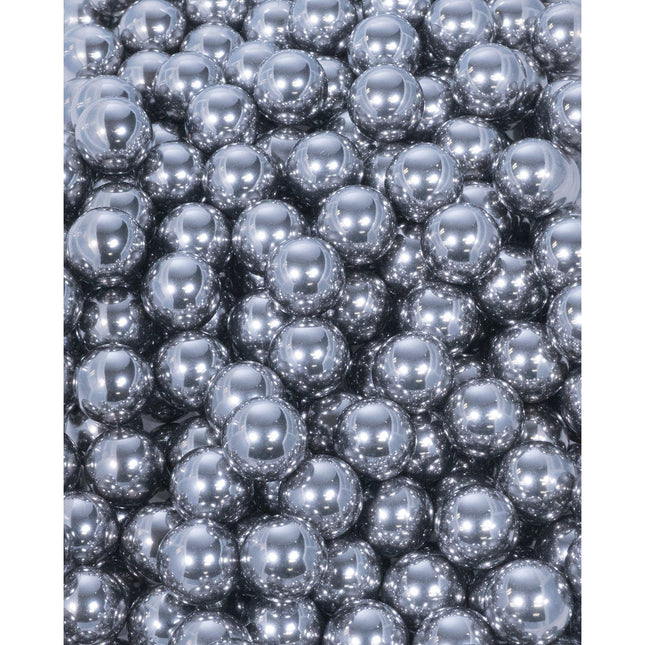
304 Stainless Steel Ball Bearings Packs
304 Stainless Steel Ball Bearings - Packs 304 Stainless Steel Ball Bearings are a great addition to aiding in filtration because they increase the surface area inside a system and allow fats and lipids to cling to them. After a run is complete, they are easily cleanable. These ball bearings come pre-packaged in 140-gram packets and may have a quantity +/- the stated quantity per pack. Sizes Available: 1/8" Diameter - ~1150 Ball Bearings Per Pack 1/4" Diameter - ~150 Ball Bearings Per Pack 7/16" Diameter - ~25 Ball Bearings Per Pack
$9.79 - $43.35
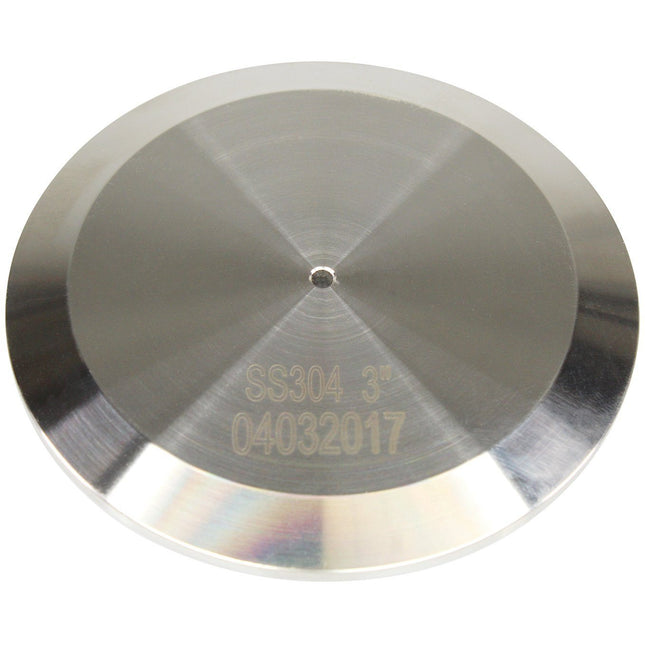
3mm Open Blast End Caps
3mm Open Blast End Caps These Tri-Clamp/ Tri Clover End Caps have a 3mm hole drilled in the center so most butane can tips to easily fit in the hole allowing the user to input solvent into a material column and open blast the material. Specifications: Material: 304 Stainless Steel Connection Type: Tri-Clamp 3mm Hole Standard: 3A Sizes Available: 1.5" 2" 3" 4"
$8.39 - $16.78
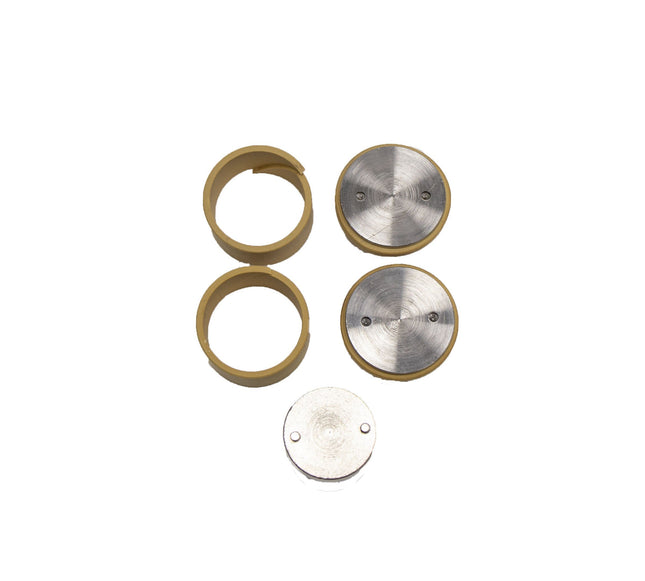
TRS21 / BVV Upgraded Top Piston Assembly
BVV-3 Included in this kit: Top piston assembly with piston seal and piston wear band. This upgrade kit can be used for the following recovery pumps: CPS TRS21 Anti-spark/explosion pump BVV 2 Cylinder Butane Recovery Pump ITS/ETL to ANSI/ISA Certified BVV 4 Cylinder Butane Recovery Pump ITS/ETL to ANSI/ISA Certified - Requires 2 kits because this unit has 4 cylinders. BVV CMEP-OL Retro Fit Upgraded Head - Requires 2 kits because this unit has 4 cylinders. BVV 4 Cyl & 2 Cyl Pump Seal Rebuild Instructions If you have upgraded to the 2-piece SS piston design this kit is used to rebuild the piston seal and wear band. Piston tool (SKU: BVV-TL1) and Loctite 242 will be needed to properly install. If tool is not used the customer is responsible for any damage done to piston during assembly.
$153.83
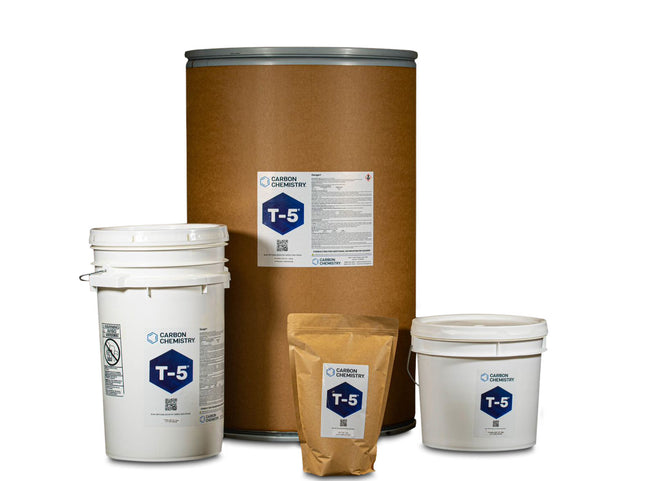
Carbon Chemistry MM Clay (T-5)
Carbon Chemistry MM Clay (T-5) A neutral powder media designed for best-in-class depth filtration and heavy metal removal. This thermally activated calcium bentonite clay provides superior support for separatory processes and excellent cation exchange capacity. The hardened clay structure and optimized surface chemistry make it ideal for both fine particulate removal and larger molecule capture. Carbon Chemistry T-5™ Neutral Activated Bentonite Clay - SDS Note: Bulk Bags and Bulk sizes are non-stocked items and will be ordered as needed and carry a several week lead time and require a forklift or pallet jack
$20.98 - $12,026.82
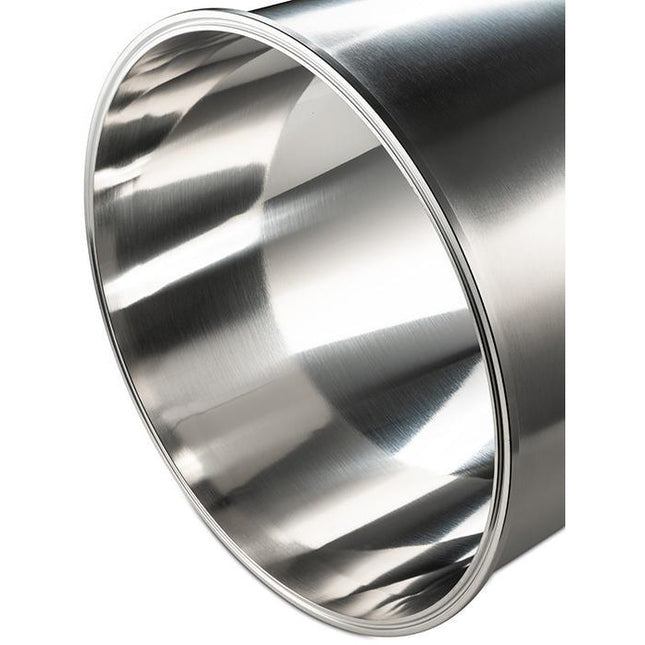
12" Tri-Clamp Spools
12" Tri-Clamp/ Tri Clamp Spools Sizes Available: 12" x 12" Tri-Clamp Spool Specifications: Tri-Clamp Size 12" Material 304 Stainless Steel Standard 3A High Polish Spool OD 12" Spool ID 11.732" Flange OD 12.57" Bead Center 12.17" OD = Outer Dimension ID = Inner Dimension Disclaimer to Customer: User assumes all responsibility and risks of the system for all Stainless Steel Parts bought separately to piece together a Closed Loop, Closed Column, or Open Blast Extractors. They DO NOT come with a standard 1 year system warranty, customer assistance on how to run your system, technical help or a guarantee of the system being tested. BVV™ 12" Tri-Clamp Spools - Drawing Material Capacity Cylinder Volume Radius (in) 1.5" 2" 3" 4" 6" 8" 10" 12" Length (in) Volume (in3) Select Material Butane ISO-Butane Propane How Much Will Fit in Cylinder FormulaVolume x Weight of Water x Specific Gravity ConstantsWeight of Water = 0.0360 (lbs / in3)Specific Gravity of = Lbs. of : Recommended: Account for an 80% fill to avoid a hydraulic lock How Much Material Will Fit in the Cylinder Volume Packing Density (g) 2.5 3 3.5 4.3 Grams of Material Lbs. of Material Cans of Butane Cans of Butane by Size Pounds of Butane mL fl oz lbs # of Cans 420 14.2 300 10.1 200 6.7 150 5.07
$398.56
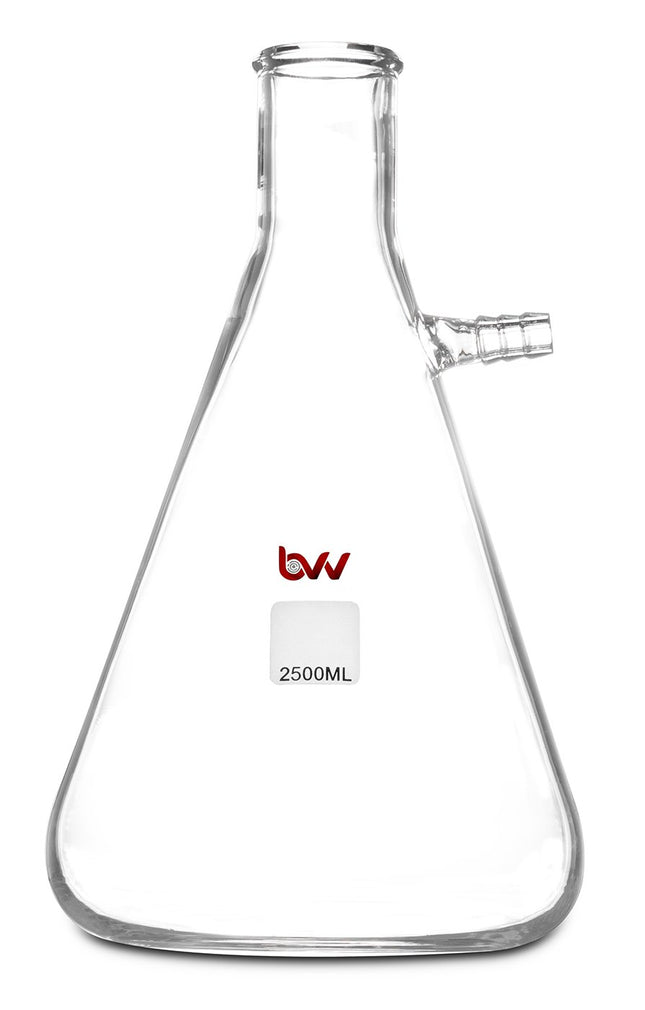
Conical Flask Filtering with Internal Side Arm
Conical Flask Filtering with Internal Side Arm These BVV™ Conical filtering flasks come with a non-jointed opening and a barbed side arm that can easily hook up to a vacuum pump. These flasks come in either 2500ml or 5000ml and are meant to be used with porcelain buchner funnels and rubber cones to create a positive vacuum seal. Barb Size- 2500ml: 14mm barb 5000ml: 16mm barb *Notice to customers: All units are inspected for broken glassware or parts before leaving BVV™. If the unit arrives damaged (this does not include minor imperfections or scuffs in glassware), the customer MUST contact BVV™ within 72 hours from carrier delivery to file a claim. If the customer DOES NOT contact BVV™ within 72 hours from carrier delivery, then BVV™ cannot issue any replacement(s) or compensation for the item; a new purchase will need to be made for a replacement. **Glassware Safety Disclaimer: BVV™ is not responsible for failure of glassware which must be inspected before and after every use because it may eventually develop imperfections or damage through normal usage, mishandling, and stress caused by temperature variations. If an imperfection or damage is noted while inspecting the glassware DO NOT use the glassware because it can fail causing bodily harm or damage to the surrounding area.**
$69.92 - $90.90
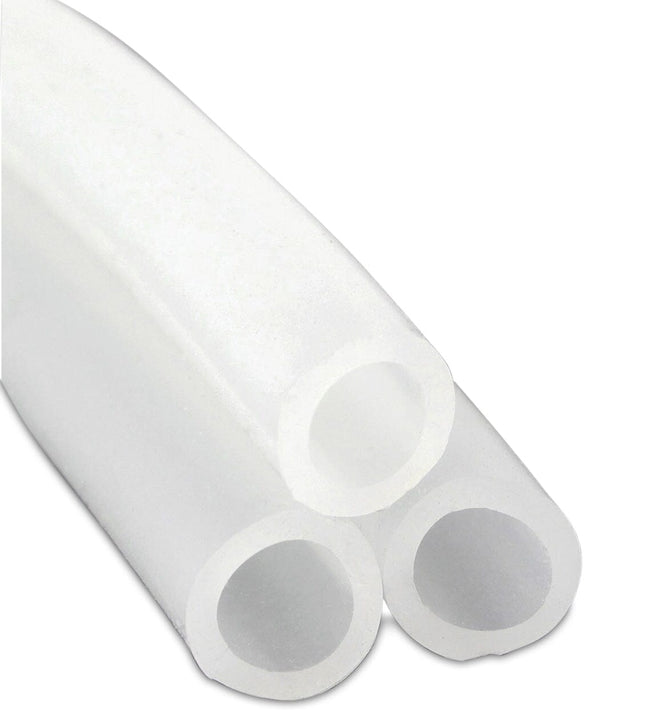
3/8" x 1/8" Wall - Heavy Duty Silicone Tubing For Flow
SILCON® Silicone Tubing (**Note: This tubing is only for flow and is NOT vacuum rated) The most outstanding properties of SILCON tubing are its flexibility and resistance to temperature extremes. These, plus its good electrical properties and ability to self-extinguish, make SILCON tubing an excellent choice for appliances and computers Peroxide-cured SILCON contains no sulfur or other acid-producing chemicals, thereby eliminating the possibility of staining, corroding, or deteriorating materials it contacts. It is extremely resistant to ozone and U.V. over long time periods. Care is recommended in the selection of fittings and clamps for SILCON as sharply barbed fittings or unlined metal clamps could tear into the tubing wall and possibly cause a failure. SILCON may be low-pressure steam sterilized in-line or autoclaved at up to 250°F in a normal autoclaving cycle. However, if exposed to repeated steam sterilization or long-term high temperature or pressure, silicone will eventually relax and become gummy. It should then be replaced. Please call or email Best Value Vacs to request different sizes and thickness (1/16" to 3/4"ID) - Colors for industrial applications are available through minimum order. Key Features: Made from FDA-sanctioned ingredients Able to resist extreme temperature variation: -100°F to 500°F Translucent natural color for visual contact with the flow resilient, stretchable, and resistance to compression set Odorless, tasteless and inert Good electrical and weatherability properties - resists U.V., ozone, gases, and moisture Certified by the National Sanitation Foundation (NSF-51) for food equipment materials MADE IN THE U.S.A. Specifications/Physical Properties Hardness, Shor A +/-5 50 Tensile Strength, PSI 1100 Elongation at Break % 375 Brittle Temperature °F -100 Max Operating Temperature °F 500 Max Operating Temperature for NSF °F 350 Comp. Set 22 Hrs. at 177°F, % 35 Tear Resistance (PPI minimum) 100 Tubing Specifications Chart ID (IN.) OD (IN.) STANDARD LENGTH WORKING PSI @ 70°F BURST PSI @ 70°F LBS PER 100FT 1/16 1/8 100 10 30 0.50 1/16 3/16 100 20 60 1.34 3/32 5/32 100 10 30 0.66 3/32 7/32 100 15 45 1.58 1/8 3/16 100 10 30 0.88 1/8 1/4 100 20 60 2.00 1/8 5/16 100 25 75 3.32 1/8 3/8 100 28 84 4.92 5/32 9/32 100 20 60 2.14 5/32 11/32 100 20 60 3.64 3/16 1/4 100 5 15 1.22 3/16 5/16 100 20 60 2.64 3/16 3/8 100 20 60 4.12 3/16 7/16 100 15 45 6.14 1/4 5/16 100 10 30 1.50 1/4 3/8 100 5 15 3.34 1/4 7/16 100 20 60 5.12 1/4 1/2 100 15 45 7.50 5/16 7/16 100 10 30 3.66 5/16 1/2 100 10 30 6.30 3/8 1/2 100 10 30 4.32 3/8 9/16 100 10 30 7.15 3/8 5/8 100 10 30 10.16 3/8 3/4 100 15 45 16.72 7/16 5/8 100 10 30 7.70 1/2 5/8 100 5 15 5.84 1/2 11/16 100 5 15 9.50 1/2 3/4 100 10 30 13.12 1/2 7/8 100 10 30 15.00 5/8 3/4 100 5 15 6.86 5/8 13/16 100 5 15 11.34 5/8 7/8 100 5 15 13.38 5/8 1 100 10 30 22.86 3/4 1 50 5 15 17.64 3/4 1-1/8 50 10 30 26.56
$47.55 - $349.62
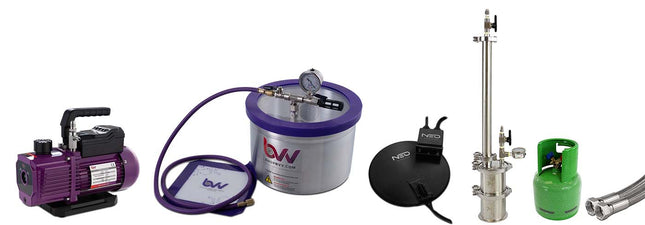
XL Mini Closed Loop Extraction Starter Kit
XL Mini Closed Loop Extraction Starter Kit (System comes with 1 yr. limited warranty) Everything You Need to Get Your Extraction Started Closed-loop extraction is a safe, fast, and efficient solution to removing oils from botanical material. Closed-loop systems allow you to do everything in a closed vessel. BVV™ has bundled our recommended vacuum chamber, vacuum pump, and complete extraction system to offer customers the most cost-effective solution possible. The Mini-XL Closed Loop Extractor Starter Kit is a step up from the closed column extractor starter kit. The Mini-XL Closed Loop Extractor is a tabletop version of a closed-loop extraction system that allows users to run personal or test-sized extractions in a short amount of time. The system also offers users the chance of recovering around 95% of their solvent. Not only does this save a considerable amount of money, but it's also safer for the user performing botanical oil extractions because the entire extraction process is in a closed-loop environment. Mini CLS / Mini XL Upgrades: Explorer: Our standard, most economical setup, perfect for the entry-level extractor on a budget. It comes with a welded bottom base and stainless reclaim container. This model has minimal features to keep costs low while providing the necessary equipment to get the job done. Professional: This model features upgrades to help produce a higher quality extract. Coming with a sleeved spool, this model allows users to utilize dry ice to freeze the material column. This will help lock in fats and waxes to the material. An inline ball valve is used to allow solvent to be suspended in the material column, as well as closing the collection base off during recovery. Upon completion of the run, extract removal is made simple by adding a removable bottom to the collection base. Explorer Professional Standard Valves Welded Bottom Base Standard Valves Dewaxer Ball Valve Splatter Platter Base Specifications: 1.5"x 12" 304 Stainless Steel Material Tube 90g 304 Stainless Steel Heavy Duty Miniature Ball Valves System Rated to 100PSI Multiple port connections for 1/4" 316 Stainless SAE 37 Degree 304 Stainless Steel Base Container 4" diameter by 8" tall Tri-Clamps at all interfaces make for high pressure, easy-clean unit. Buna-N Gaskets are designed for Oil Processing Temp range -40-200F Dimensions (Inches): 16" Overall Height x 4" Diameter Weight: 18 lbs. Operating Temperature Range: -40F to 160F Ultimate Vacuum: as low as 10 Microns Designed to run two cans of solvent and reclaim it (420ml) 1135ml Max FILL!! Construction: All components made of 304 Stainless Steel. Max Vacuum -29.9inHg High Polish Interior Automatically Includes: High-Pressure PTFE Braided Stainless Steel Hose Can Tap Tool 6LB Mastercool Solvent Recovery Tank BVV™ V4D 4CFM Two Stage Vacuum Pump This is the BVV™ V4D 4CFM Two Stage Vacuum Pump used in botanical extraction. Please refer to these charts for vacuum specifications at altitude and conversions: Vacuum at Altitude Chart Vacuum Conversion Chart Key Feature Internal Check Valve Oil Mist Filter Cap Larger Oil Reservoir for longer oil life Lightweight Rubber Feet for noise dampening Reliable, economical, and efficient Models BVV4D BVV7S BVV9D Stage 2 1 2 Ultimate Vacuum (Microns) 15 75 15 Refrigerant Classes A1 Non-Toxic, Non Flammable Dimensions (in) 12.4 x 4.8 x 10.16 12.4 x 4.8 x 10.16 15 x 6.3 x 11.22 Weight (lbs) 19.4 16.5 32 Free Air Displacement 4.3 CFM 6.4 CFM 8.5 CFM Motor Size (HP) RPM 1 HP 3440 RPM Oil Capacity 10oz / 300ml 14.5oz / 410ml 24oz / 680ml Voltage 110V 60 Hz Power Cord Hard Wired 3m / 9.8' Power Cord Power Switch Standard On / Off Operating Temperature Range 32F to 125 F (0C to 52C) Gas Ballast Valve Yes No Yes Intake Fittings Stainless Steel Inlet Fitting with 1/4" SAE & 3/8" JIC Male Ports *Note: Column capacity may vary depending on the density of packed material and packing density. Capacity is calculated using the industry standard of 4.2g/in3. This is the upper limit for column capacity. Low density, uncut, and/or lightly packed material can reduce capacity by 50%. For best results, we recommend tightly packing coarse ground material. ***Note: Butane (Solvent) is not included with systems unless ordered in the drop-down menu or separately. Any order with butane WILL NOT SHIP EXPEDITED.
$1,385.88 - $1,774.65
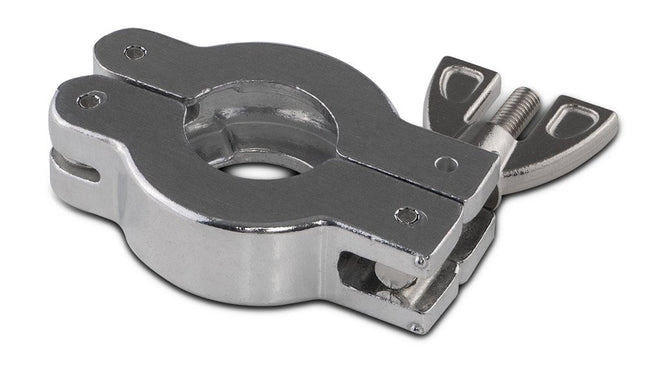
KF Clamps
KF Clamps Clamp for standard High Vacuum flanges. Size Available: KF-16 KF-25 KF-40 KF-50
$25.87
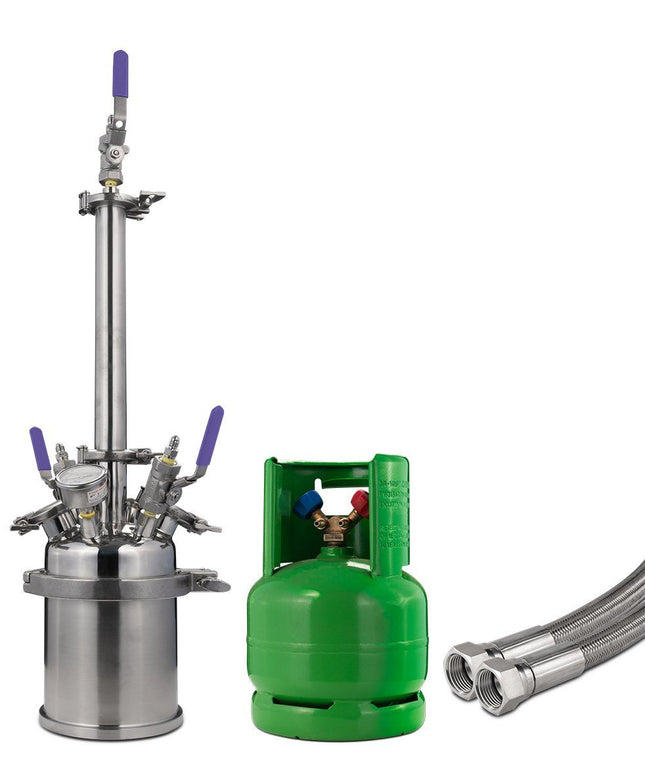
90-270G Apollo Top Fill Closed Loop Extractor
***Note: Butane(Solvent) not included with systems unless ordered with dropdown menu or separately. Any order with butane WILL NOT SHIP EXPEDITED. DISCLAIMER: This unit is intended for LEGAL purposes only, to be used in accordance with local laws and ordinances. Use only in extremely well-ventilated areas. Check with your local fire marshal for guidance when operating indoors Closed Loop Reclamation Extraction System (System comes with 1 yr. limited warranty) Please Read Optional Upgrades Section for Clarification on System Upgrades The scalable closed loop hydrocarbon extraction system performs botanical extraction within a sealed, vacuumed system. Utilizing a top-fill input, solvent washes through the material column, collecting oils as it passes over the material. The oil-bearing solvent is collected in the collection base under the material column. Once collected, the solvent is distilled and recovered, leaving the oils in the collection base. This is a passive unit that utilizes pressure differences created by manipulating temperature to move solvent. Extractor Configurations: Explorer: Our standard, most economical setup, perfect for the entry-level extractor on a budget. It comes with a welded bottom base and a standard LP tank. This model has minimal features to keep costs low while providing the necessary equipment to get the job done. Professional: This model features upgrades to help produce a higher quality extract. Coming with a sleeved spool, this model allows users to utilize dry ice to freeze the material column. This will help lock in fats and waxes to the material. An inline ball valve is used to allow the solvent to be suspended in the material column, as well as closing the collection base off during recovery. Upon completion of the run, extract removal is made simple by adding a removable bottom to the collection base. Elite: The Elite series is the premium version of the Professional. It features all American-made instrumentation valves by SSP, an AVCO ultra-low temperature inline ball valve, and all high-pressure clamps. The elite series adds a level of dependability needed for those seeking to produce the highest quality extracts. Explorer Professional Elite BVV 316SS Full Bore Valves Welded Bottom Base BVV 316SS Full Bore Valves Dewaxer Ball Valve Splatter Platter Base SSP Valves Dewaxer AVCO Ball Valve HP Clamps Splatter Platter Base Kit Includes: 6" x 6" Collection Base 1.5" Material Column (12",18",24", or 36") 6lb Recovery Cylinder 1/4" Stainless Steel Braided PTFE hoses Buna-N Gaskets Standard Valves *Note: Column capacity may vary depending on the density of packed material and packing density. Capacity is calculated using the industry standard of 4.2g/in3. This is the upper limit for column capacity. Low density, uncut, and/or lightly packed material can reduce capacity by 50%. For best results, we recommend to tightly pack coarse ground material. Material Capacity Cylinder Volume Triclamp Spool (in) 1.5" 2" 3" 4" 6" 8" 10" 12" Length (in) 1" 2" 3" 4" 6" 8" 10" 12" 18" 24" 36" 48" Volume (in3) Select Material Butane ISO-Butane Propane How Much Will Fit in Cylinder FormulaVolume x Weight of Water x Specific Gravity ConstantsWeight of Water = 0.0360 (lbs / in3)Specific Gravity of = Lbs. of : Recommended: Account for an 80% fill to avoid a hydraulic lock How Much Material Will Fit in the Cylinder Packing Density (g) 2.5 3 3.5 4.3 Grams of Material Lbs. of Material
$839.08 - $2,279.50
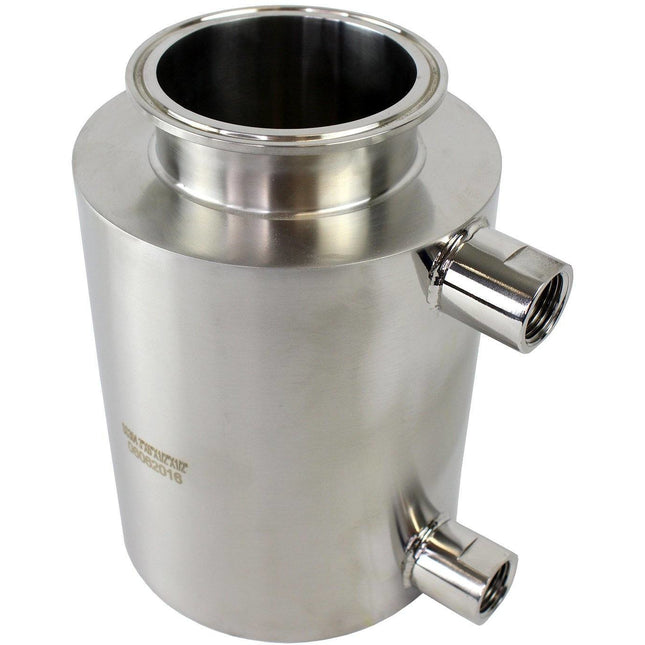
Fully Jacketed Containers
Fully Jacketed Containers Fully jacketed containers are designed to be used as collection pots or collection traps in an extraction system and they allow the circulation of temperature control fluid through the outer welded jacket that has 1/2" FNPT ports to adapt several types of connections too. These Containers are made out of 304 Stainless steel and have Sanitary welds on them.
$314.66 - $594.35

120mm Glass Funnel
120mm Glass Funnel 120mm Glass Funnel with 24/40 joint. *Notice to customers: All units are inspected for broken glassware or parts before leaving BVV™. If the unit arrives damaged (this does not include minor imperfections or scuffs in glassware), the customer MUST contact BVV™ within 72 hours from carrier delivery to file a claim. If the customer DOES NOT contact BVV™ within 72 hours from carrier delivery, then BVV™ cannot issue any replacement(s) or compensation for the item; a new purchase will need to be made for a replacement.
$30.77$20.98
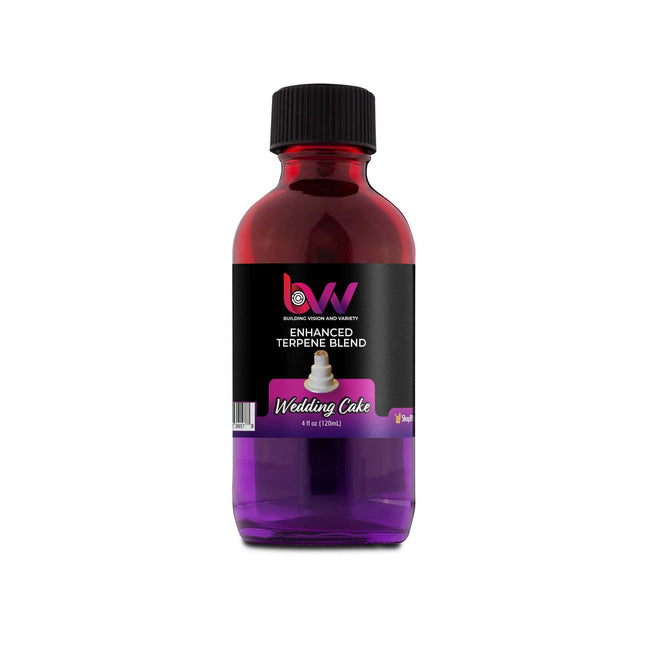
Terpenes Wedding Cake
BVV™ Terpenes Wedding Cake All sales are final. Orders can be refunded prior to fulfillment and shipping but once the order has been fulfilled and/or shipped, no refunds will be issued. Due to the hazardous nature of our product, we are unable to accept returns. BVV™ Terpenes are botanically derived terpenes enhanced with "nature-identical" artificial flavors. These flavors boost the natural flavor profile of the terpenes, providing the user with a more pleasant vaping experience. In order to provide complete transparency and elicit customer confidence, all ingredients are disclosed in the technical data sheet. BVV™ Wedding Cake Safety Data Sheet BVV™ Wedding Cake Technical Data Sheet BVV™ Food Grade Certificate Wedding Cake is a mash-up of sweet, pastry-named varieties to create a profile good enough for any special day. FRAGRANCE: Cherry Pie and Girl Scout Cookies blend to form a tasty flavor with lemon and mango highlights along with creamy lavender notes. A complex variety; the exhale holds the citrus cream flavor. EFFECT: Great for unwinding at the end of the day or just removing the discomfort of the day. Great for lifting your spirits. Storage Requirements: Keep in the original container, lid securely tightened and away from heat, open flames, sunlight, combustible materials, and hot surfaces. Store below 15℃ (60℉). Improper storage can cause terpenes to degrade. Dilution: Terpenes must be diluted prior to use for flavor and effect (1-5% by total volume). Terpenes are oil soluble and mix well with plant extracts, coconut oil, and more. Handle With Care: Can cause skin irritation, do not ingest PRIOR to dilution.
$13.98 - $209.77
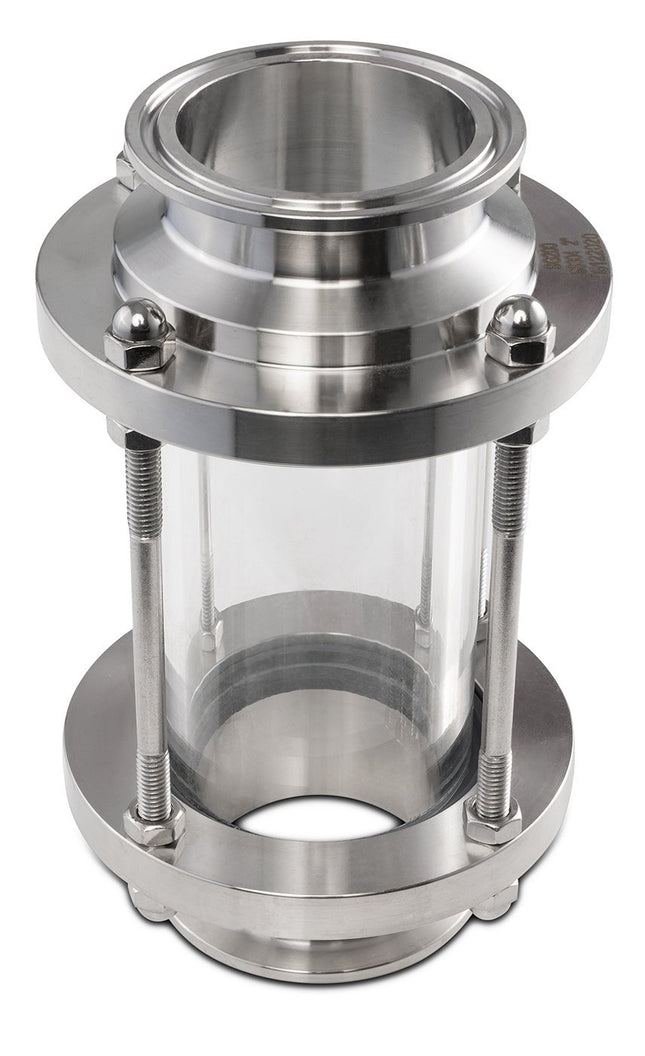
Tri-Clamp Sight Glass - Long
Tri-Clamp Sight Glass - Long These tall sight glasses are a great additions closed-loop extraction system to view the liquefied solvent flowing through your system and see the color before the purging process is completed. The short sight glass also allows the user to add a viewing port to their system without adding a lot of additional height compared to a normal Tri-Clamp sight glass. Unlike many competitors, this sight glass is also nitrogen tested for leaks at 100 PSI before it is sent to the customer to ensure safe operation of their extraction system. ***Note: Does not include clamp or gasket. Specifications: Sight Glass Material: 304 Stainless Steel Glass Material: Borosilicate Gasket Material: Buna Connection Type: Tri-Clamp x Tri-Clamp Specifications for Caged Sight Glasses ONLY Product Temperature Spec (Min – Max) Max Pressure Rating Gasket Material Glass Material & Thickness SG150-C -20 - 100°C 230 PSI Butyronitrile Pyrex GlassØ45X7X100MM SG200-C -20 - 100°C 200 PSI Butyronitrile Pyrex GlassØ60X7X100MM SG300-C -20 - 100°C 180 PSI Butyronitrile Pyrex GlassØ85X8X80MM SG400-C -20 - 100°C 165 PSI Butyronitrile Pyrex GlassØ119X8X80 SG600-C -20 - 100°C 150 PSI Butyronitrile Pyrex GlassØ164X8X87
$110.48 - $489.46
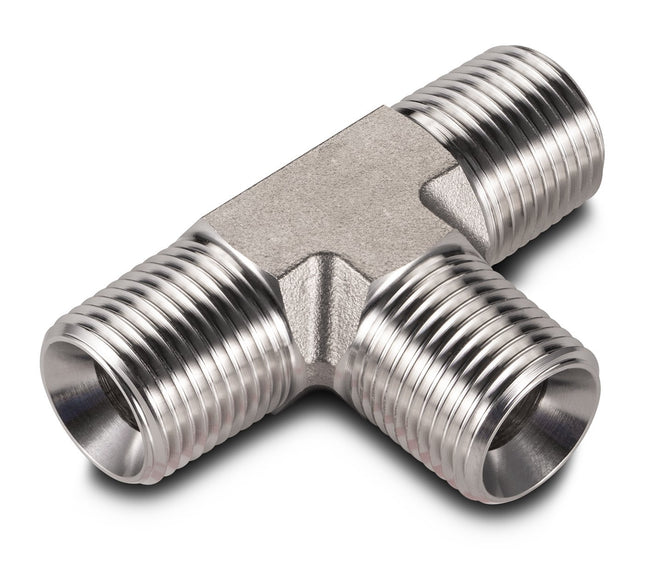
MNPT Male Tee
MNPT Male Tee Pipe Fittings BVV™ - MNPT TEE. This type of fitting is used to connect tubes to female threads. This product is sure to provide a leak-free connection. Use the BVV™ Male Tee when dealing with air, water, and or oil. **NOTE: Pre-Taped option comes from BVV Pre-taped with Yellow UL Listed Gas PTFE Tape on the Male NPT threads ONLY for a +0.50c charge per male npt end. (JIC Threads DO NOT need to be taped.) These tees are made for NPT pipe fittings and are available in two sizes: 1/4 inch 3/8 inch BVV™ MNPT Male Tee - Data Sheet
$27.97 - $34.96
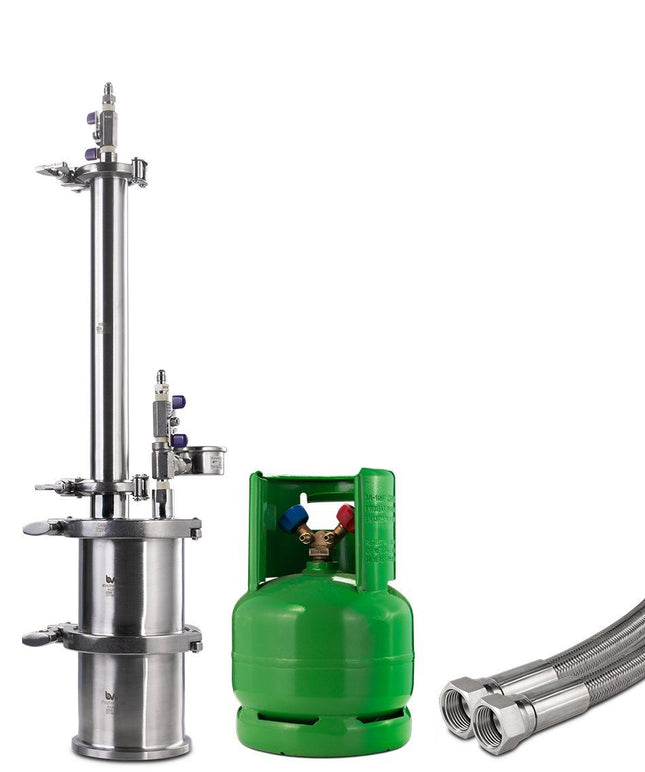
90G XL Mini Top Fill Closed Loop Extractor
***Note: Butane(Solvent) not included with systems unless ordered with dropdown menu or separately. Any order with butane WILL NOT SHIP EXPEDITED. DISCLAIMER: This unit is intended for LEGAL purposes only, to be used in accordance with local laws and ordinances. Use only in extremely well ventilated areas. Check with your local fire marshal for guidance when operating indoors Closed Loop Reclamation Extraction System (Comes with 1 yr. Limited warranty) 90G XL Mini Top Fill Closed Loop Extractor (System comes with 1 yr. limited warranty) The MiniXL Extractor is an excellent choice for small personal runs or test runs of material and comes in a small tabletop design that is easy to use. Mini CLS / Mini XL Upgrades: Explorer: Our standard, most economical setup, perfect for the entry level extractor on a budget. Comes with a welded bottom base and stainless reclaim container. This model has minimal features to keep cost low while providing the necessary equipment to get the job done. Professional: This model features upgrades to help produce a higher quality extract. Coming with a sleeved spool, this model allows users to utilize dry ice to freeze the material column. This will help lock in fats and waxes to the material. An inline ball valve is used to allow solvent to be suspended in the material column, as well as closing the collection base off during recovery. Upon completion of the run, extract removal is made simple by adding a removable bottom to the collection base. Explorer Professional Standard Valves Welded Bottom Base Standard Valves Dewaxer Ball Valve Splatter Platter Base Specifications: 1.5"x 12" 304 Stainless Steel Material Tube 90g 304 Stainless Steel Heavy Duty Miniature Ball Valves System Rated to 100PSI Multiple port connections for 1/4" 316 Stainless SAE 37 Degree 304 Stainless Steel Base Container 4" diameter by 8" tall Tri-Clamps at all interfaces make for a high pressure, easy clean unit. Buna-N Gaskets are designed for Oil Processing Temp range -40-200F Dimensions (Inches): 16" Overall Height x 4" Diameter Weight: 18 lbs. Operating Temperature Range: -40F to 160F Ultimate Vacuum: as low as 10 Microns Designed to run two cans of solvent and reclaim them (420ml) 1135ml Max FILL!! Construction: All components made of 304 Stainless Steel. Max Vacuum -29.9inHg High Polish Interior Automatically Includes: High-Pressure PTFE Braided Stainless Steel Hose Can Tap Tool 6LB Mastercool Solvent Recovery Tank *Note: Column capacity may vary depending on the density of packed material and packing density. Capacity is calculated using the industry standard of 4.2g/in3. This is the upper limit for column capacity. Low density, uncut, and/or lightly packed material can reduce capacity by 50%. For best results, we recommend to tightly pack coarse ground material. Material Capacity Cylinder Volume Triclamp Spool (in) 1.5" 2" 3" 4" 6" 8" 10" 12" Length (in) 1" 2" 3" 4" 6" 8" 10" 12" 18" 24" 36" 48" Volume (in3) Select Material Butane ISO-Butane Propane How Much Will Fit in Cylinder FormulaVolume x Weight of Water x Specific Gravity ConstantsWeight of Water = 0.0360 (lbs / in3)Specific Gravity of = Lbs. of : Recommended: Account for an 80% fill to avoid a hydraulic lock How Much Material Will Fit in the Cylinder Packing Density (g) 2.5 3 3.5 4.3 Grams of Material Lbs. of Material
$573.37 - $769.16
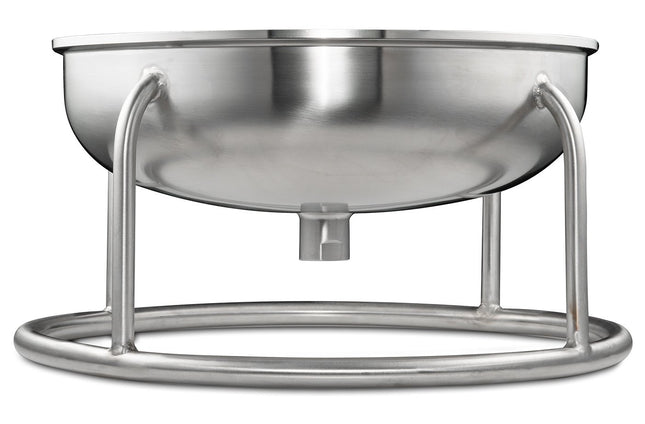
Hemispherical Tri-Clamp Reducer with Welded Ring Stand
Hemispherical Tri-Clamp Reducer with Welded Ring Stand Hemispherical Tri-Clamp Reducer with Welded Ring Stand allows the user to create a larger drain/filtering system allowing more weight to be supported with the ring stand. These reducers have 2 connection points with Tri-Clamp on the top and FNPT drain port on the bottom. Specifications: Material: 304 Stainless Steel High Polish Interior Standard: 3A Connection Types: 4" Tri-Clamp x 1/4" FNPT 6" Tri-Clamp x 1/2" FNPT 8" Tri-Clamp x 1/2" FNPT 10" Tri-Clamp x 1/2" FNPT 12" Tri-Clamp x 1/2" FNPT
$314.66 - $601.34
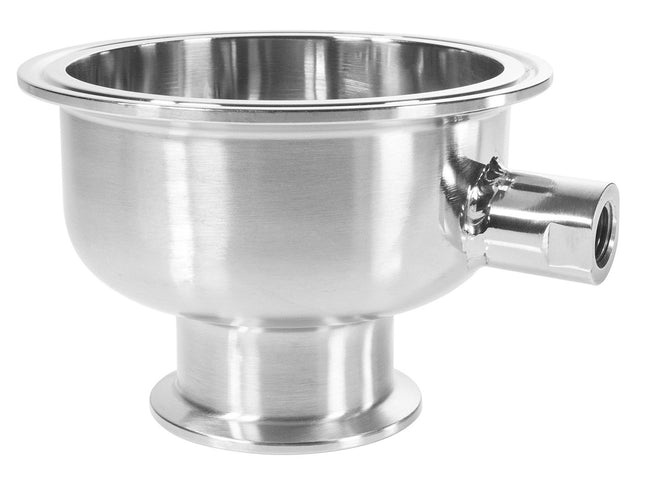
Hemispherical Tri-Clamp Reducer with 1/4" FNPT Side Port
Hemispherical Tri-Clamp/ Tri Clover Reducer with 1/4" FNPT Side Port This unique version of the hemispherical reducer has a 1/4" FNPT port welded straight on to the hemispherical reducer with Tri-Clamp ends on both sides. It allows the user to adapt to a port on their extraction system without having to adapt multiple pieces together and reduce the number of leak points. A hemispherical reducer also shortens the height of a system because it is shorter than a conical reducer. Tri Clamp reducers are the perfect alternative to concentric reducers when space is at a premium in confined areas. In addition, this device is also leak proof and adequate for easy application. Specifications Material 304 Stainless Steel Sizes Available: 3" x 1.5" Tri-Clamp x 1/4" FNPT 4" x 1.5" Tri-Clamp x 1/4" FNPT 4" x 2" Tri-Clamp x 1/4" FNPT 6" x 1.5" Tri-Clamp x 1/4" FNPT 6" x 2" Tri-Clamp x 1/4" FNPT 8" x 2" Tri-Clamp x 1/4" FNPT 10" x 2" Tri-Clamp x 1/4" FNPT 12" x 2" Tri-Clamp x 1/4" FNPT
$58.74 - $419.54
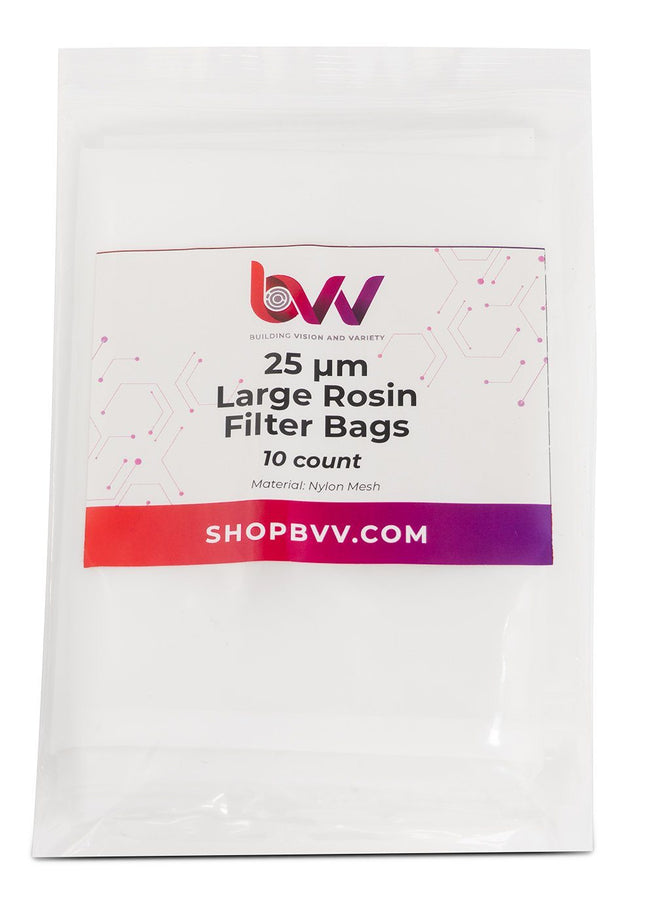
Large Rosin Filter Bags - 10 Pack
Large Rosin Filter Bags - 10 Pack DISCLAIMER: This unit is intended for LEGAL purposes only, to be used in accordance with local laws and ordinances Rosin filter bags are instrumental in the rosin extraction process and will yield and help remove unwanted contaminants from your end product. By using filter bags they allow you to pack material in tighter together which allows more pressure to be created on a smaller point. Filtration levels of the bags vary from our lowest 25-micron level to our largest 220-micron level and this allows the user to have a wider selection for their application. These mesh bags are also intended to be tossed out after use because the filtration media will be clogged after usage. Key Features: Increased Yield Higher Possible Pressure Stitched seam to prevent blowouts Wide Range of Micron Levels Sizes Available (Micron): 25μm 45μm 73μm 90μm 120μm 160μm 190μm 220μm Specifications: Bag Dimensions: 5" x 7.5" Material: Nylon Seam Type: Stitched Quantity Per Pack: 10
$13.98 - $19.58
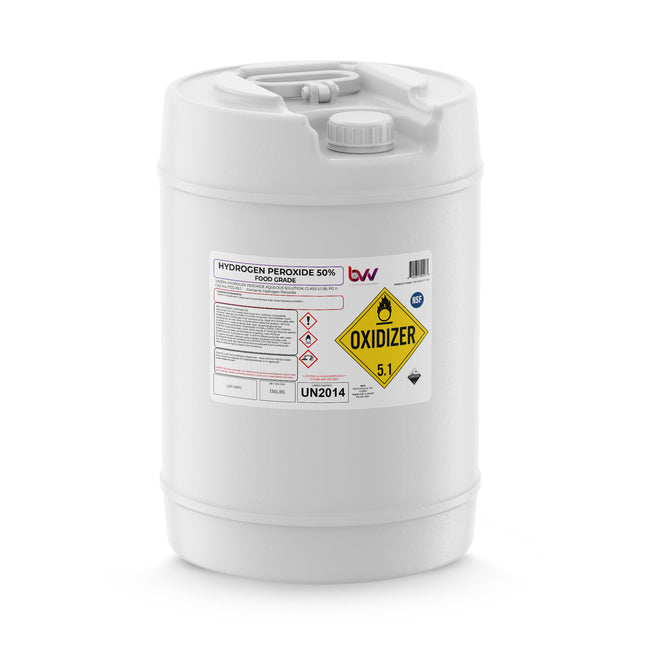
Hydrogen Peroxide 50% Food Grade
50% Food Grade Hydrogen Peroxide Our Food-grade 50% peroxide tests at ~50.4%. This the strongest peroxide we offer, next to our 35% Food Grade Peroxide, Our Food Grade 50% hydrogen peroxide is formulated with a special stabilizer package (organophosphonate) that replaces transition metals stabilizers typically found in hydrogen peroxide solutions. Our Peroxide is NSF® Certified. NSF-certified means a product was independently verified for safety, sanitation, and quality by NSF. NSF certification is recognized by health departments, government agencies, and industry associations. *Certified under ANSI/NSF Standard 60 Drinking Water Additives-Health Effects. Dosage levels shall be in accordance with NSF requirements. 55 Gallon Drum weights 548lbs, 270 Gallon Tote weighs 2500lbs. hydrogen peroxide usually loses less than 1% of its initial concentration in one year (0.5% for a 50% solution). 50% Hydrogen Peroxide NSF Food Grade Certificate of Analysis 50% Hydrogen Peroxide NSF Food Grade Safety Data Sheet Chemical Formula: H2O2 Molecular Weight: 34.015 g/mol CAS Registry Number: 7722-84-1 Appearance Colorless Liquid Odor: None Density 1.196 g/cm3 @ 20 °C (68 °F) Boiling Point: 114 °C (237 °F) Solubility in water: Completely Soluble GHS Pictograms: GHS Signal Word: Danger GHS Hazard Statements: H272, H302 + H332, H314, H335 GHS Precautionary Statements P210, P220, P260, P261, P264, P270, P271, P280, P283, P301+P317, P301+P330+P331, P302+P361+P354, P304+P340, P305+P354+P338, P306+P360, P316, P317, P321, P330, P363, P370+P378, P371+P380+P375, P405, P420, and P501 UN Identification Number: 2014 Proper Shipping Name: 50% Hydrogen Peroxide, Aqueous Solution Transport Hazard Class: 5.1, 8 Packing Group: II DOT Placard:
$363.60 - $902.01
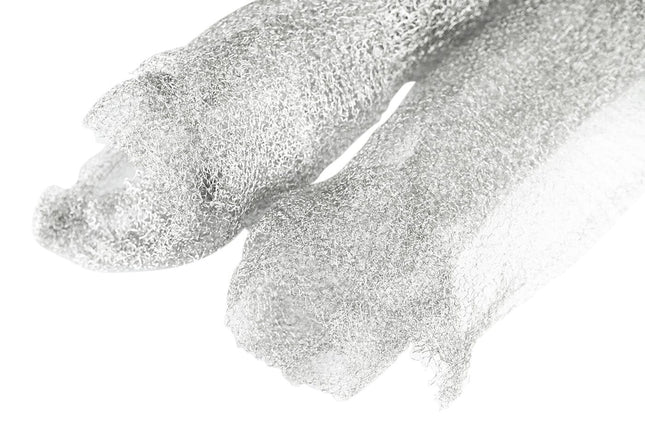
304 Stainless Steel Wool - 2 Pack
304 Stainless Steel Wool This 304 Grade Stainless Steel Wool is a great accessory for any extraction, condensing, or a filtration system. Stainless Steel Wool provides a vastly superior surface area compared to ball bearings and can be packed tighter to increase the surface area. This 304 Stainless Steel Wool comes in a pack of two rolls that roughly measure 15" x 15". BVV™ recommends cleaning this filtration material with high purity alcohol before use to reduce contaminants. Specifications Material 304 Stainless Steel Wire Thickness 0.006" Dimensions 15" x 15"
$27.97
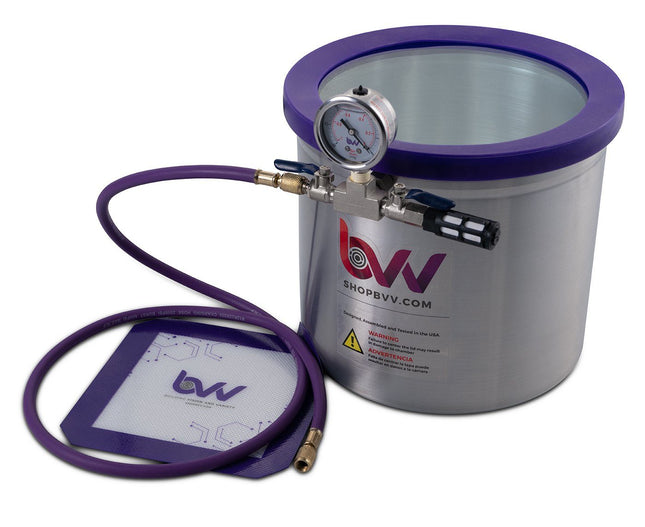
Best Value Vacs 3 Gallon Aluminum Side Mount Vacuum Chamber
3 Gallon Wide Aluminum Vacuum Chamber (Comes with 2 Year Limited Warranty) This is a complete BestValueVac® vacuum chamber setup designed built and 100% tested in Naperville, Illinois. With our unique patent pending gasket design (Patent #9475627) this chamber is sure to last 10,000 uses with proper care and maintenance. The gasket itself is reversible (doubling the life of our system) allowing customers to instantly take it off and flip it over. Every chamber is tested prior to shipping to lose no more than 2.5Hg/24hrs. -Please Refer to these charts for vacuum specifications at altitude and conversions: Vacuum at Altitude Chart Vacuum Conversion Chart Key Features: High Strength Aluminum Chamber Highly Durable and Reversible Silicone Gasket Glycerin filled vacuum gauge User friendly vacuum connections that fit most vacuum pumps on the market 50 Micron Air filter for reducing airborne contaminants when releasing the vacuum Silicone vacuum pad 5' of vacuum rated HVAC hose to pull a vacuum. Specification Chamber Material 3004 Aluminum Gasket Material Silicone Lid Material Acrylic Internal Dimensions (ID) 9" Tall x 10" Diameter Vacuum Gauge (Glycerin Filled) InHG (0)-(-30) Manifold Connections 1/4" SAE and 1/4" FNPT Temperature Rating 150°F (65°C) Additional Included Items 5' Purple Vacuum Rated HVAC HosePlatinum Cured Silicone PadBlack 50 Micro Air Filter Compatibility Explanation: BestValueVac® Chambers are not compatible with stabilization resin (i.e. Cactus Juice™, Gator Venom™, Minwax™ etc.), alcohol, ethanol, acetone and acrylic based monomers or polymers.The lid may only be cleaned with soapy water. ShatterVac® chambers are not compatible with stabilization resin (i.e. Cactus Juice™, Gator Venom™, Minwax™ etc.), acetone, acrylic based monomers or polymers. The lid may be cleaned with soapy water and low strength cleaning agents. GlassVac® chambers are compatible with all solvents and stabilization resins. We only recommend and warranty GlassVac® chambers for resin infusion and wood stabilization.The lid may be cleaned with any solvent or cleaning agent. See FAQ at the top for product safety warnings. Pump Warranty Information: Customers using solvents such as stabilization resins (MinWax™, Gator Venom™ etc.), alcohol and other polar solvents must use the vacuum pumps in conjunction with a cold trap for evacuations in excess of 5 minutes. (Exludes Cactus Juice™) If the consumer is using the pump for prolonged periods of time exceeding 5 minutes we require that a cold trap is used or the pump warranty is void. These stabilization resins have the ability to break down the internal components of the pump that are plastic resulting in a seized motor voiding all warranties. When evacuation exceeds 5 minutes these solvents begin to vaporize and then re-condense in the vacuum pump reservoir. Once enough solvent re-condenses in the pump displacing the oil the plastic internal components may begin to warp, melt or seize. The use of a cold trap will condense the vapors prior to making their way to the vacuum pump preventing pump damage due to excessive use. Furthermore, Minwax Wood Hardener™ is not to be used with any vacuum pumps, EVER. (A seized motor will result within the first use.) To prevent these issues from happening to your process, change the Oil after each vacuum pump use, Even if the use time is only 5min. For shipping info including Import/Export details visit our Shipping link at the bottom of the page.
$181.80

6" Vacuum Chamber Digital Heat Pad
6" Vacuum Chamber Digital Heat Pad Please Read Before You Buy! Chamber NOT Included, Sold Separately. Heat Pad must fit correct size of the chamber! Fits a 1 and 1.5 Stainless Steel, 3 Qt Pyrex, and 1.75 Qt Pyrex Chamber This Digital Heat Pad will adhere to the bottom of a chamber vessel with a peel and stick backing. This unit will hold a temperature within a degree to the set temperature (dependent on the environment and air movement). The temperature offset must be found to set the controller accurately. (See ‘Operation’ instructions in the operation manual) Included with this Digital Heat Pad: Instructions on how to operate and set parameters. Simple standoff bumpers (provide thermal separation between the vessel and the work surface) Thermal tape (best method to check and verify temperature) Specs: UL Listed Fahrenheit Digital Controller. Min Temp: Ambient + 5 Max Set Temp: 160°F Ultimate Max Temp: 248°F Voltage: 110VAC Only Power Consumption: 220-watt Digital Control: Increments of 1 Degree. Accuracy: +/- 0.2 Degrees Units: Degrees Fahrenheit Instructions: Fully included Relay Lifespan: Approx. 10 million cycles User can reprogram: Yes
$128.66
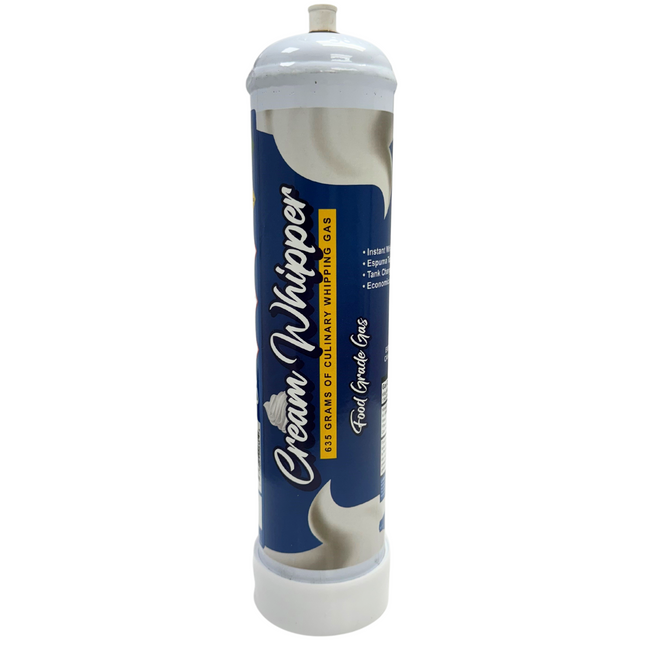
635G Ms. Cream Food-Grade Nitrous Oxide Tank 99.5% (635g / 321 liters) Made in Italy
Ms. Cream 635g Nitrous Oxide Tank 99.5% Food Grade Made in Italy, Triple Filtered Mr. Cream® is a true culinary gas. Trusted for it high purity and known for not adding any strange or unknown flavors to your cream that other lesser quality import gasses my leave behind. The original brand since the 1930's. At BVV we have tried many and this is the highest purity tank we have carried. This innovative cylinder is the fastest and easiest way to replenish your cream. It is not only a good assistant for making dessert at home but also a new solution for the industrial catering industry! Before using our whipped cream-making equipment you must first read the manufacturer's instructions. This will show you how to safely charge your cream using the cream 635g tank. 635g Charger - 1.14lbs Liquid N2O - 321 Gas Liters of N2O. Cylinder Fitting: M11x1 Thread (compatible with the Best Whip Nitrous Oxide Regulator.) Tank Pressure: 755 PSI Includes 1 nozzle per tank. *At end of use use this nozzle to completely empty the tank for recycling. Do not heat over 120F SUPERIOR GAS QUALITY - Each tank is filled with the purest, and highest quality E942 food grade gas. That is why you will not have a hard time making chocolate or vanilla, mint, or Bailey's flavored cream whipper. Cocktail foams, airy sauce, mousse, and hot or cold foam can be made easily, too. FOOD-GRADE & LONG SHELF LIFE - Ms Cream whipped tanks are made with food-grade compliance and production standards. Each tank has a long shelf life of 5 years so you can use them over a period of time. ANTI-LEAKAGE DESIGN - Ms Cream tanks conform with Manufacturing International Standards such as ISO 9001, and ISO 9002. Any cream dispenser can be used with this cylinder. UNIVERSAL COMPATIBILITY - Compatible with all professional whipped cream makers in the market. From now on, you can easily finish making whipped cream in a few seconds and without leaving odors or contaminants in the dispenser. RECYCLEABLE CONTAINER - Recycle empty tank with other metal recycling. The tank is considered empty if you hear a clicking noise coming form the valve when you shake it. What Is Nitrous Oxide? Nitrous Oxide is a chemical compound with the formula N2O. It is a colorless, non-flammable gas with a slightly sweet odor and taste. Nitrous oxide is often used for various purposes due to its unique properties and effects. What is Nitrous Oxide Used For? Nitrous oxide (N2O) is most commonly used in the culinary world for various purposes, primarily for creating foams, whipped creams, and infusions. Outside the culinary world nitrous oxide is also commonly utilized as a propellant, a cryogenic refrigerant, and as a performance-enhancing additive for internal combustion engines. Here's how nitrous oxide is most commonly used in culinary applications: Whipped Cream: Nitrous oxide is perhaps most well-known in the culinary field for its use in making whipped cream. In this application, heavy cream and sweeteners are combined in a whipped cream dispenser or siphon, and nitrous oxide cartridges are used to pressurize the dispenser. When the cream is released from the dispenser, the sudden release of pressure causes the nitrous oxide to expand and whip the cream into a light and fluffy texture. This method allows for the creation of stable whipped cream that retains its texture for an extended period. Foams: Chefs use nitrous oxide to create foams from various liquids, such as fruit juices, sauces, and purees. To make a foam, the desired liquid is mixed with a gelling agent, strained, and loaded into a whipped cream dispenser along with nitrous oxide. When dispensed, the nitrous oxide aerates the liquid, resulting in a light and airy foam that can be used as a garnish or flavor enhancer. Infusions: Nitrous oxide can be used to infuse liquids with the flavors of herbs, spices, fruits, or other aromatic ingredients. For example, herbs like basil or spices like cinnamon can be placed in a whipped cream dispenser along with a liquid (e.g., oil or alcohol) and nitrous oxide. The pressurized nitrous oxide infuses the liquid with the flavors and aromas of the added ingredients quickly. Cocktails: Some bartenders use nitrous oxide to create foam or froth on cocktails, adding a unique visual and textural element to drinks. This technique is especially popular in molecular mixology. Sauces and Dressings: Nitrous oxide can be used to create light and airy sauces or dressings. By adding nitrous oxide to a mixture of liquids and ingredients, chefs can achieve a desired texture and consistency. Desserts: Nitrous oxide can be used to create innovative desserts, such as foamy fruit purees, mousse-like textures, and light, airy soufflés. It's essential to use food-grade nitrous oxide and follow proper safety precautions when using it in culinary applications. The use of nitrous oxide cartridges and whipped cream dispensers is common in professional kitchens and home cooking to achieve these culinary effects. What Are The Hazards Of Nitrous Oxide? Nitrous oxide (N2O), while commonly used in various applications can pose certain hazards if not used properly. Here are some potential hazards associated with nitrous oxide: Asphyxiation: The most significant hazard of nitrous oxide in culinary use is the risk of asphyxiation. Nitrous oxide can displace oxygen in an enclosed space, leading to oxygen deprivation if inhaled in high concentrations. This can result in dizziness, loss of consciousness, and even death. Frostbite: Nitrous oxide is stored as a compressed liquid and is extremely cold when released. Contact with liquid nitrous oxide can cause frostbite or cold burns to the skin. Care should be taken when handling nitrous oxide cartridges or dispensers. Is Nitrous Oxide Flammable? Nitrous oxide (N2O) is not flammable in the typical sense because it does not support combustion. However, it can contribute to the combustion of other substances. Here's a more detailed explanation: Non-Flammable: Nitrous oxide itself does not burn or catch fire. It is an oxidizer, meaning it can support the combustion of other substances by providing oxygen. When nitrous oxide is used in applications like rocket propulsion or automotive nitrous systems, it does not ignite by itself. Enhancing Combustion: Nitrous oxide is sometimes used in combination with fuel in internal combustion engines to increase power output. In this context, it is often referred to as "nitrous" or "NOS." When nitrous oxide is injected into the engine's intake, it provides additional oxygen, allowing more fuel to burn, resulting in increased engine power. However, it's important to note that this process is controlled and safe when used as intended in automotive applications. Safety Precautions: While nitrous oxide is generally considered safe when used according to manufacturer guidelines, improper handling or misuse can be hazardous. Nitrous oxide should not be exposed to open flames, sparks, or high temperatures, as it can decompose at elevated temperatures and pressure, potentially leading to the release of oxygen and nitrogen gases. In summary, nitrous oxide is not flammable by itself, but it can enhance the combustion of other materials when used in controlled and purposeful applications. When using nitrous oxide, it's essential to follow safety guidelines and avoid exposing it to conditions that could lead to its decomposition or unintended ignition. How Do I Use Nitrous Oxide Safely? Using nitrous oxide (N2O) safely is crucial to prevent accidents and health risks. Here are some general guidelines for using nitrous oxide safely: Follow Manufacturer's Instructions: Always follow the manufacturer's instructions for any equipment or cartridges containing nitrous oxide. Different devices or cartridges may have specific usage guidelines. Ventilation: Ensure that you use nitrous oxide in a well-ventilated area. Adequate ventilation helps disperse any gas leaks and prevents the buildup of nitrous oxide in confined spaces, reducing the risk of asphyxiation. Avoid Direct Inhalation: Never inhale nitrous oxide directly from cartridges, whipped cream dispensers, or any other source. Inhaling nitrous oxide for recreational purposes can be dangerous and is not recommended. Protective Gear: When handling nitrous oxide cartridges or equipment, especially if they contain liquid nitrous oxide, wear appropriate protective gear, such as gloves and safety glasses, to prevent frostbite or cold burns. Store Safely: Store nitrous oxide cartridges and equipment in a cool, dry place away from direct sunlight and heat sources. Keep them out of the reach of children and unauthorized individuals. No Smoking: Avoid smoking or open flames near nitrous oxide, while nitrous oxide is not flammable, it will support combustion to the same extent as oxygen. Training and Education: Ensure that individuals using nitrous oxide equipment are trained in its safe handling and usage. Leak Detection: Regularly check for leaks in nitrous oxide equipment and connections. Use a leak detection solution (soapy water) to identify leaks by observing bubbles at the connections. Proper Disposal: Dispose of used nitrous oxide cartridges and equipment according to local regulations and guidelines. Do not puncture or incinerate cartridges. Emergency Preparedness: Be prepared for emergencies by having safety equipment, such as fire extinguishers and first-aid kits, readily available in areas where nitrous oxide is used or stored. Follow Legal Regulations: Abide by local laws and regulations regarding the sale, purchase, and use of nitrous oxide. In some areas, nitrous oxide may be subject to restrictions due to its potential for misuse. Always exercise caution and prioritize safety when using nitrous oxide, whether it's for culinary, automotive, medical, or other legitimate purposes. If you have specific concerns or questions about the safe use of nitrous oxide in a particular context, consult with experts or regulatory authorities in your area. Chemical Formula: N2O Molecular Weight: 44.013 g/mol CAS Registry Number: 10024-97-2 Appearance Colorless Odor: Characteristic Density 0.115 lb/ft3 Boiling Point: -88.5C (-127.3F) Solubility in water: Completely Soluble GHS Pictograms: GHS Signal Word: Danger GHS Hazard Statements: H270, H280, H281, H336 GHS Precautionary Statements P220, P244, P261, P271, P282, P304+P340, P319, P336+P317, P370+P376, P403, P403+P233, P405, P410+P403, P501 UN Identification Number: 1070 Proper Shipping Name: Nitrous Oxide Transport Hazard Class: 2.2, 5.1 Packing Group: None DOT Placard: Nitrous Oxide Safety Data Sheet (SDS)
$30.51 - $183.09
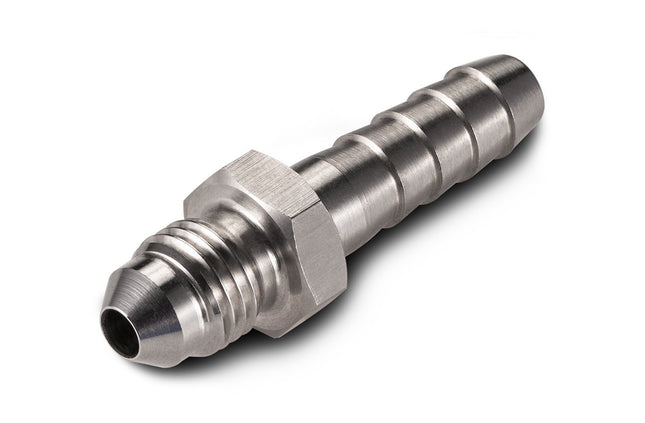
Stainless Steel 1/4" Hose Barb x 1/4" 37 Degree Flare
Stainless Steel 1/4" Hose Barb x 1/4" 37° Flare
$9.79
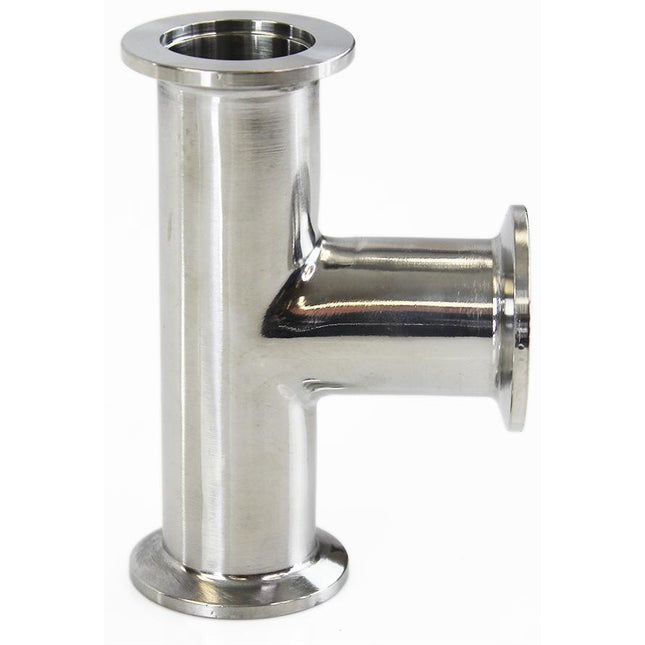
KF-25 Tee
This is a KF-25 Flanged Tee for High Vacuum Applications. The Material is 304SS and it has a maximum vacuum rating of 10^-7 torr @ 72F.
$62.93
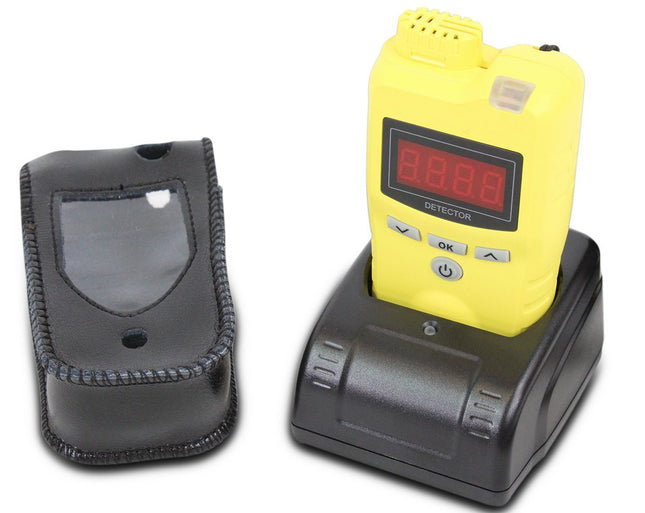
Portable Butane Leak Detector (C4H10)
Portable Butane Leak Detector C4H10 (Comes with 30 Day Limited warranty) Product Features: Handheld, industry use, high sensitivity and accuracy Intrinsically safe, Ex sign is Exhibit Rugged ABS+PC case, heavy duty, crash resistant High-capacity chip, 4 layers PCB board Visual & audible alarm Low battery alarm Charging dock, easier access to recharging Energy saving LED screen shows real time concentration External air sampling pump is available for gas leak detection Leather case is provided Usage: The gas detection instruments we designed are widely used in petrochemical, municipal environmental protection, coal mine, residential places, and other natural and wide ranges of industrial environments. Technical Parameter: Gas detected - Butane (Infrared Sensor C4H10 IR Measuring range - (0.00~5.00)%vol, (0~100)%vol Resolution ratio - 0.01%vol Sensor - Infrared Sensor, Made in UK Sensor lifetime - ≥5 year Response time - ≤45s(T90) Alarms - Audible--buzzer with ≥75dB audible Visible--flashing red LED, ≥20m visible Alarm point - Fully adjustable Continuous working time - >16h Working current - < 1mA ( without backlight) Working temperature - -25℃~+55℃, short time: -40℃~+55℃ Display - Liquid crystal display (LCD) Battery model - PL123450, 3.7V/1500mA Charging time - 4-5 hours Dust and water resistance - IP65 Size & Weight - 105*54*32mm/450g Included in the box: Charging adapter calibration cap calibration gas hose hanging cord leather case manual
$342.62
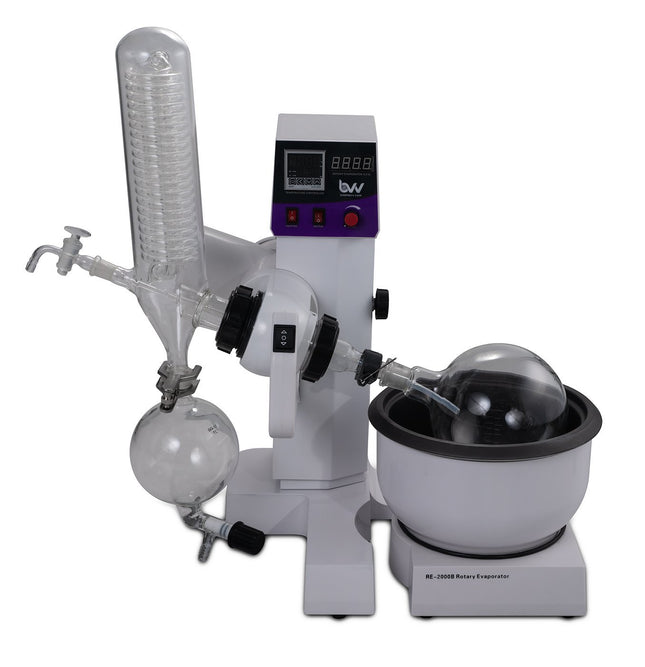
2L Electric Lift Rotary Evaporator
2L Electric Lift Rotary Evaporator The 2L BVV™ Electric Lift Rotary Evaporator is the ideal tabletop rotovap for small scale evaporation and recovery of solvents. Designed with ease of use in mind, the 2L allows users to separate solvents from a given mixture with minimal user input. The heating bath and temperature controls allow for precise, repeatable results. The double helix vertical condenser gives maximum surface area for condensation of vapors. PTFE seals on the entire system are made for maximum chemical resistance to ensure vacuum depth and lifespan of the system. Our rotovaps are a fraction of the price of more costly systems with the same functionaility and evaporation efficiency. 2L Best Value Electric Lift Rotovap Parts Diagram Features: Digital PID temperature and rotation speed control All PTFE valves for improved lifespan and chemical resistance Direct injection capability for continuous feeding of solution Small tabletop footprint Electric multi-level lifting mechanism for ease of use CE Listed 90-day limited warranty (excludes glassware, consumables & moving parts) Specifications: Model 2L Best Value Electric Lift Rotary Evaporator Optimum Ambient Temperature 5~25C / 41~105.8F Glass Material GG-17 High Borosilicate Power (V/Hz) 110V 60Hz Speed Regulation Digital Step-less Regulation Rotation Speed 20-198 RPM Set Temperature 0-99C / 0-210F Temperature Control Digital Temperature Control Maximum Vacuum Pressure -29.8 inHg Evaporating Flask Capacity 2L (2000mL) Receiving Flask Capacity 1L (1000mL) Condenser Style Vertical Double Helix Evaporation Capacity Alcohol >/= 1 L/H Heater Max Current Draw (Amps) 13.6 Water Bath Material Teflon Composite Water Bath Size 10 x 5 in. Lifting Function Electric Lifting Stroke 14cm / 5.5 in. Total Power Consumption (kW) 1.8 kW Dimensions 28 x 18 x 27 in. Weight 37.2 kg / 82 lbs Vacuum Connection 3/8” Barb Condenser Connection 3/8” Barb Warranty 90 days excluding glass parts Certifications CE Rotovap Quick Start Guide This guide gives basic quick start instructions for rotovaps. It is intended to provide a starting point for learning the process. Parameters should be adjusted to suit specific needs. Clean and assemble unit. Make sure all pieces are cleaned and sterilized using an alcohol solution. Connect chiller to condenser and set to 0C (32F). Always fill a rotovap condenser from the top down (chiller output to top of condenser, chiller input to bottom of condenser). Connect vacuum pump to cold trap and connect cold trap to vacuum port on rotovap. Turn on heat bath and set to 40C (113F). Once heat bath, chiller and cold trap have reached desired temperatures, turn on rotovap motor and set speed to approximately 100 RPM (does not have to be precise). Keep in mind, higher RPM’s will increase evaporation power but also increase heat load. Start vacuum pump and allow vacuum to pull down for a few minutes before injection. Once vacuum has been pulled to a sufficient level (does not have to be precise but should be below 100 Torr), using the injection valve, very slowly inject approximately 500 mL of solution into evaporating flask and then close the valve. Allow this small amount to begin evaporating. You may see the chiller begin to rise in temperature, this is called “priming” the rotovap. Once the temperature stops rising or all liquid is almost completely evaporated, open the injection valve again very slowly so that a small amount of liquid begins to enter the evaporating flask. Do not close injection valve this time but continue to allow solution to enter the evaporating flask. At this point you must try to match the input speed to the output speed. What this means is that you should be injecting the same amount of liquid into the rotovap that is equal to the amount of liquid dripping from the condenser into the receiving flask. You will know that the input speed and output speed are matched because the chiller will remain at a stable temperature. If the chiller begins to rise, then you are injecting too much liquid. Dial back the valve until the chiller stabilizes. Once everything is stabilized, you may walk away from the rotovap if necessary. Check every so often to make sure temperatures remain stable and evaporation continues efficiently. ***Note: All units are inspected for broken glass or parts before unit is shipped. If unit arrives damaged or glass is broken (this does not include minor imperfections or scuffs in glassware), Customer MUST contact BVV™ within 3 days of delivery to file a claim and receive a replacement part. If customer DOES NOT contact BVV™ within 3 days of delivery responsibility for replacement parts falls on the customer and they must pay for replacement pieces.*** ***Glassware Safety Disclaimer: BVV™ is not responsible for failure of glassware which must be inspected before and after every use because it may eventually develop imperfections or damage through normal usage, mishandling, and stress caused by temperature variations. If an imperfection or damage is noted while inspecting the glassware DO NOT use the glassware because it can fail causing bodily harm or damage to the surrounding area.***
$2,167.62 - $2,377.39
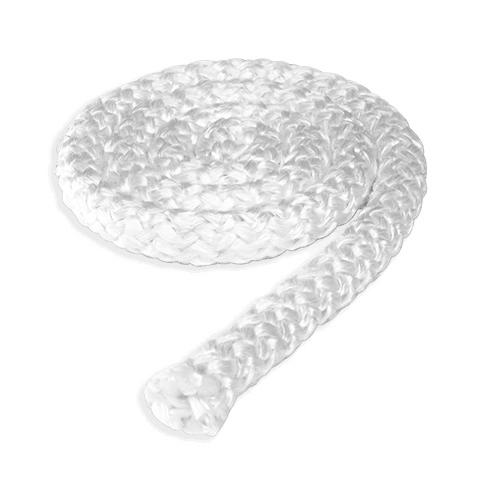
Fiberglass Insulation Rope 10 Feet
Fiberglass Insulation Rope 10 Feet ***Caution: Always use proper protection when working with fiberglass. Avoid skin and eye contact.*** Ten feet of white 1/2" fiberglass insulation rope. Used to wrap the upper half of boiling flasks. Specifications: Width: 1/2" Material: Fiberglass Maximum Temperature: 1000F Resistant to solvents, acids, and bleach Color: White Length: 10 ft. (20ft needed for 5L Flask.)
$39.16
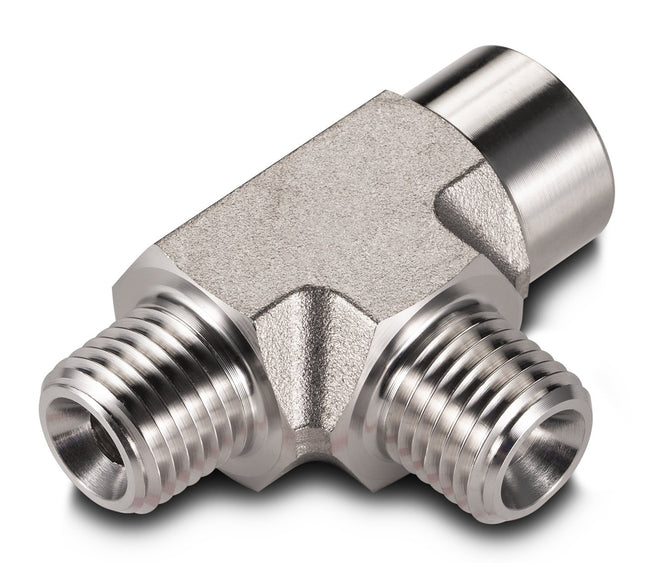
MxMxF Street Tee
BVV™ MxMxF Street Tee BVV™ brand stainless steel parts are made with precision 304 Grade Stainless Steel and are clean and free from burrs or debris. These fittings are NPT threads (National Pipe Taper) and will compress against other Female/Male NPT threads creating a tighter and tighter connection. All NPT threads require thread sealant to create a watertight and gas-tight seal between the threads. We recommend using Yellow Gas PTFE Tape because it is rated for gases and is UL listed and it is NOT recommended to use white PTFE tape because it is not rated for gas service. **NOTE: Pre-Taped option comes from BVV Pre-taped with Yellow UL Listed Gas PTFE Tape on the Male NPT threads ONLY for a +0.50c charge per male npt end. (JIC Threads DO NOT need to be taped.) MxMxF Street Tees are the reverse version of a normal street tee and have 2 Male NPT Connectors and 1 Female NPT Connector. This street tee can reduce the amount of pipe nipples or hex nipples a system configuration has and reduces the amount of possible leak points on the system.BVV™ MxMxF Street Tee - Data Sheet Specifications Material 304 Stainless Steel Connection Type(s): 1/4"-18 FNPT 3/8"-18 FNPT 1/4"-18 MNPT 3/8"-18 MNPT Sizes Available: 1/4" 3/8"
$27.97
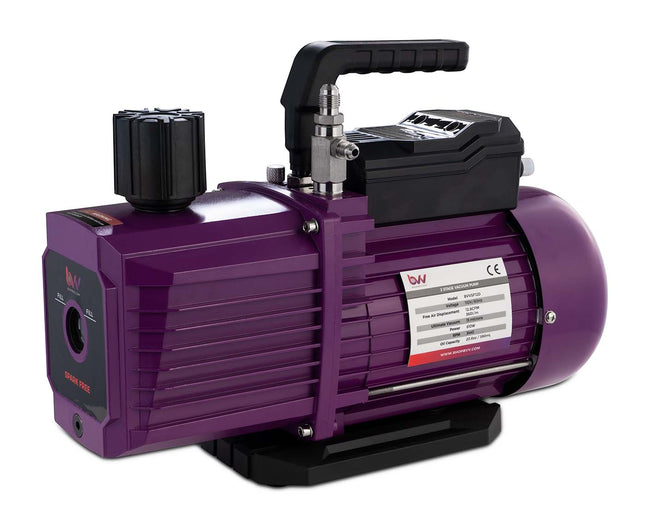
V9D 9CFM Two Stage Vacuum Pump
BVV™ V9D 9CFM Two Stage Vacuum Pump This is the BVV™ V9D 9CFM Two Stage Vacuum Pump. Please Refer to these charts for vacuum specifications at altitude and conversions: Vacuum at Altitude Chart Vacuum Conversion Chart Key Features: Internal Check Valve Oil Mist Filter Cap Larger Oil Reservoir for longer Oil life Lightweight Rubber Feet for noise dampening Reliable, Economical and Efficient. Models BVV4D BVV7S BVV9D Stage 2 1 2 Ultimate Vacuum (Microns) 15 75 15 Refrigerant Classes A1 Non-Toxic, Non Flammable Dimensions (in) 12.4 x 4.8 x 10.16 12.4 x 4.8 x 10.16 15 x 6.3 x 11.22 Weight (lbs) 19.4 16.5 32 Free Air Displacement 4.3 CFM 6.4 CFM 8.5 CFM Motor Size (HP) RPM 1 HP 3440 RPM Oil Capacity 10oz / 300ml 14.5oz / 410ml 24oz / 680ml Voltage 110V 60 Hz Power Cord Hard Wired 3m / 9.8' Power Cord Power Switch Standard On / Off Operating Temperature Range 32F to 125 F (0C to 52C) Gas Ballast Valve Yes No Yes Intake Fittings Stainless Steel Inlet Fitting with 1/4" SAE & 3/8" JIC Male Ports Pump Warranty Information Customers using solvents such as stabilization resins (MinWax™, Gator Venom™ etc.), alcohol and other polar solvents must use the vacuum pumps in conjunction with a cold trap for evacuations in excess of 5 minutes. (Excludes Cactus Juice™) If the consumer is using the pump for prolonged periods of time exceeding 5 minutes we require that a cold trap is used or the pump warranty is void. These stabilization resins have the ability to break down the internal components of the pump that are plastic resulting in a seized motor voiding all warranties. When evacuation exceeds 5 minutes these solvents begin to vaporize and then re-condense in the vacuum pump reservoir. Once enough solvent re-condenses in the pump displacing the oil the plastic internal components may begin to warp, melt or seize. The use of a cold trap will condense the vapors prior to making their way to the vacuum pump preventing pump damage due to excessive use. Furthermore, Minwax Wood Hardener™ is not to be used with any vacuum pumps, EVER. (A seized motor will result within the first use.) To prevent these issues from happening to your process, change the Oil after each vacuum pump use, Even if the use time is only 5min.
$601.34

Straight GL-14 Barb
Straight GL14 Barb Straight GL14 Barb connection Specifications: 8MM GL14 Female Connection Straight Style
$9.79
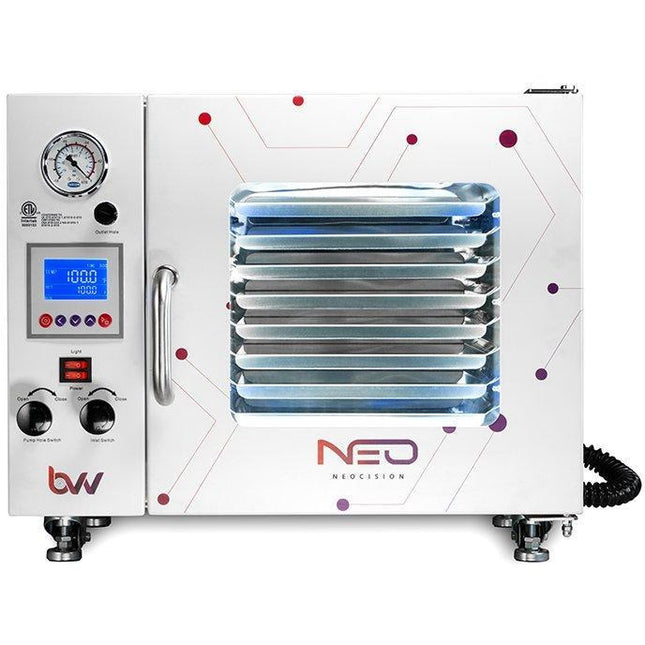
0.9CF BVV™ Neocision ETL Lab Certified Vacuum Oven
0.9CF BVV™ Neocision Certified Lab Vacuum Oven - 5 Wall Heating, LED's, 8 Shelves Standard - 3 Year Warranty Disclaimer This unit is intended for LEGAL purposes only, to be used in accordance with local laws and ordinances. Use only in well-ventilated areas! Backed by our 3 Year Parts and Labor Warranty. Introduction Our vacuum ovens are purpose-built to perform degassing / purging of light hydrocarbon solvents. Using the technique of cold boiling, the oven applies a gentle heat under reduced pressure conditions to expedite solvent degassing while simultaneously preserving color, aroma, and overall solute quality. We've applied our extensive vacuum expertise and industry experience to produce a series of ovens designed exactly for your needs: low consumption, high-throughput, and reliable operation. Performance Capabilities At BVV™, we make every effort to provide oven performance capabilities in a standardized format. We're not interested in juking our stats to make a sale. Instead, our goal is to provide quality, transparent production capabilities that meet the demands of our professional customers. Temperature Stability: ±1.0° Temperature Range: RT+18°-212°F Temperature Uniformity: within 7% of the temperature setpoint. Heat-Up Time: 45 minutes to preheat. Optimal saturation reached in 120 minutes, over 30 minutes faster than competitors. Ultimate Vacuum: <500 µmHg / mTorr / micron Time to Vacuum: 4 minutes to 29"Hg using our VE Series 4cfm Dual Stage Vacuum Pump. Vacuum Hold: guaranteed to lose less than 1"Hg (25.4 torr) in 24 hours. Technical Data Electrical Voltage 120V Frequency 60Hz Power 550W Current 10A Plug IEC C13 (unit ships with detachable NEMA 5-15p cable) Internal Chamber Heating Superior 5 Wall Heating (left, right, top, bottom, rear) Temperature Range RT+18°-212°F Chamber Material Stainless Steel Dimensions (LxWxH) 12.75" x 12.625" x 11.625" Vacuum Gauge Style Glycerin-filled for accuracy and longevity Range (units) -30 to 0 (inHg) / -1 to 0 (bar) Shelving Ships With 8 Slide-in Shelves Shelf Dimensions (LxW) 11.5" x 11.25" Shelf Capacity 129 in2 Total Shelf Capacity 1035 in2 / 7.2 ft2 Safety Seal Silicone on Tempered Glass Window Dimensions (LxH) 11.75" x 11" Lights 4 strips of LEDs provide clear, bright view of interior Handle No plastic, all metal parts for lifetime durability Exterior Dimensions (LxWxH) 24.25" x 19" x 20.75" Weight 115 lbs Support Heavy Duty Casters and Adjustable Leveling Feet Safety Electrical Built-in, resettable, overcurrent circuit breaker Thermal Automatic overtemperature shutoff Compliance CE CE Listing Recognized ISO ISO 9001:2015 ETL Certified Conforms to ANSI/UL STD.61010-1, 61010-2-010 -- Certified to CAN/CSA STD. C22.2 NO.61010-1, 61010-2-010 Connections Vacuum Inlet KF25 / NW25, quarter-turn valve Purge Inlet 5/16" Barbed, 10-turn valve Atmospheric Release Quick-release dial Contains Ships With KF25 x 1/4" JIC Flare with 1/4" vacuum hose and adjusting wrenches. User Manual Included Vacuum Pump Sold Separately. Recommended Pump VE Series 4cfm Dual Stage Vacuum Pump Warranty 3 Years Capacity and Throughput Planning Oven capacity requirements vary widely by the producer. We wanted to create a method to assist in determining the best oven match for your operation, based on a few of the parameters of your extraction and of your desired purge. We based this formula on an expected extraction yield of 25%, with an extract-density of 1 g/in2. Using the following variables, this formula is designed to provide an estimate of your required shelving capacity: Size = Extraction Batch Size (lbs) Number = Runs per 24h Period Purge = Your desired purging duration (hours) Area Required (ft2) = [(Size) * (Number) * (Purge+1)] / 122 Area Required (in2) = (Size) * (Number) * (Purge+1) * 1.18 Note: This item is a freight ship item and will ship Via Ground Freight. Expedited freight can only be calculated by calling customer service 331-281-0154. All orders with expedited freight through the website will not be honored and will need to be re-quoted. A valid Phone Number IS REQUIRED to ship, Otherwise Ground Freight Cannot Contact you for a delivery setup window. Freight Time is 2-5 Days. West Coast 5 Days, Midwest 2 days, East Coast 3-4 days.
$1,783.05
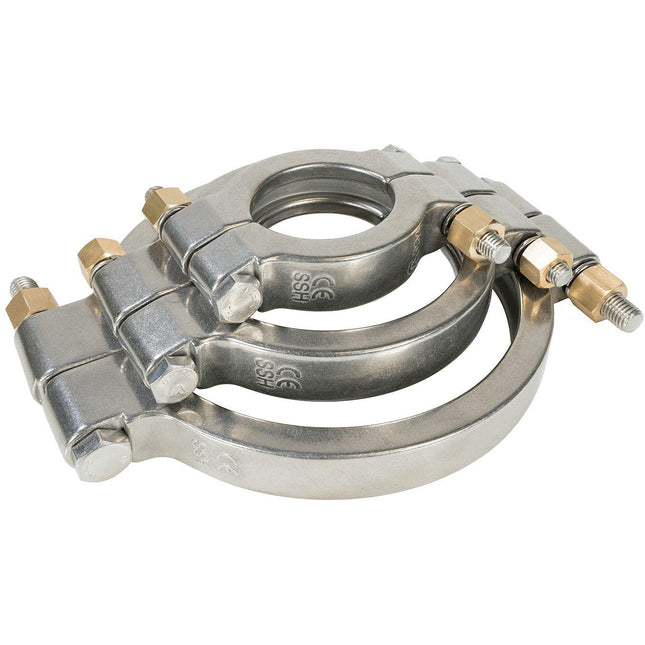
L.J. Star SSH Series High Pressure Clamps
L.J. Star SSH Series High Pressure Clamps These high pressure clamps are part of a complete line of stainless sanitary clamps made specifically for the pharmaceutical and biotech industries, the Series SSH hygienic clamp incorporates a unique profile and two bolts for greater clamping force. Suitable for high pressure applications. The SSH high-pressure clamp is part of a complete line of hygienic clamps made specifically for the pharmaceutical and biotech industries where joint cleanliness and efficiency are of paramount importance. These stainless steel clamps are made from investment castings to produce a high quality, precision fit assembly. They are designed to provide quick access to the joint for cleaning and inspection without sacrificing safety. Replacement Bolts for L.J. Star SSH Series High Pressure Clamps. These clamps come in five sizes: 1.5, 2, 3, 4, and 6 inches. Nut Sizes for these clamps: 1.5, ,2, 3, & 4 (5/8" Nut) *6" Clamp uses 3/4" Nut. Datasheet - Series SSH (High Pressure) Sanitary Clamp
$76.92 - $223.75
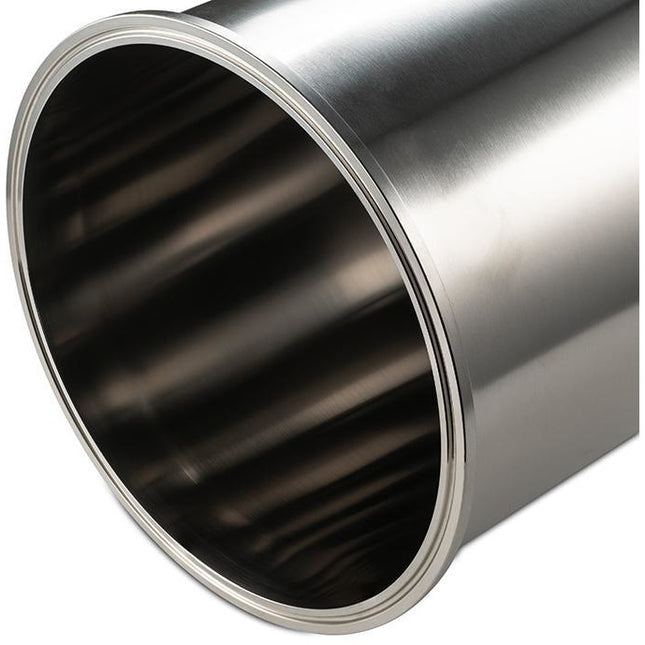
8" Tri-Clamp Spools
8" Tri-Clamp/ Tri Clover Spools Sizes Available: 8" x 12" Tri-Clamp Spool 8" x 24" Tri-Clamp Spool Tri-Clamp Size 8" Material 304 Stainless Steel Standard 3A High Polish Spool OD 8" Spool ID 7.782" Flange OD 8.57" Bead Center 8.15" OD = Outer Dimension ID = Inner Dimension Disclaimer to Customer: User assumes all responsibility and risks of the system for all Stainless Steel Parts bought separately to piece together a Closed Loop, Closed Column, or Open Blast Extractors. They DO NOT come with a standard 1 year system warranty, customer assistance on how to run your system, technical help or a guarantee of the system being tested. BVV™ 8" Tri-Clamp Spools - Drawing Material Capacity Cylinder Volume Radius (in) 1.5" 2" 3" 4" 6" 8" 10" 12" Length (in) Volume (in3) Select Material Butane ISO-Butane Propane How Much Will Fit in Cylinder FormulaVolume x Weight of Water x Specific Gravity ConstantsWeight of Water = 0.0360 (lbs / in3)Specific Gravity of = Lbs. of : Recommended: Account for an 80% fill to avoid a hydraulic lock How Much Material Will Fit in the Cylinder Volume Packing Density (g) 2.5 3 3.5 4.3 Grams of Material Lbs. of Material Cans of Butane Cans of Butane by Size Pounds of Butane mL fl oz lbs # of Cans 420 14.2 300 10.1 200 6.7 150 5.07
$180.40 - $482.47
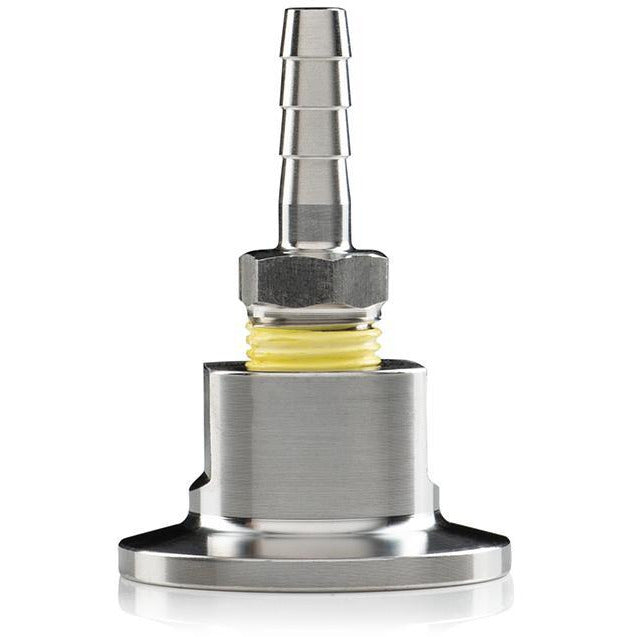
KF-25 x Barb Adapter
KF-25 x Barb Adapter This 304 Stainless Steel KF-25 adapter is fitted with a 304 stainless hose barb adapter to connect a vacuum pump or vacuum oven to a flexible rubber hose.
$46.15 - $54.54
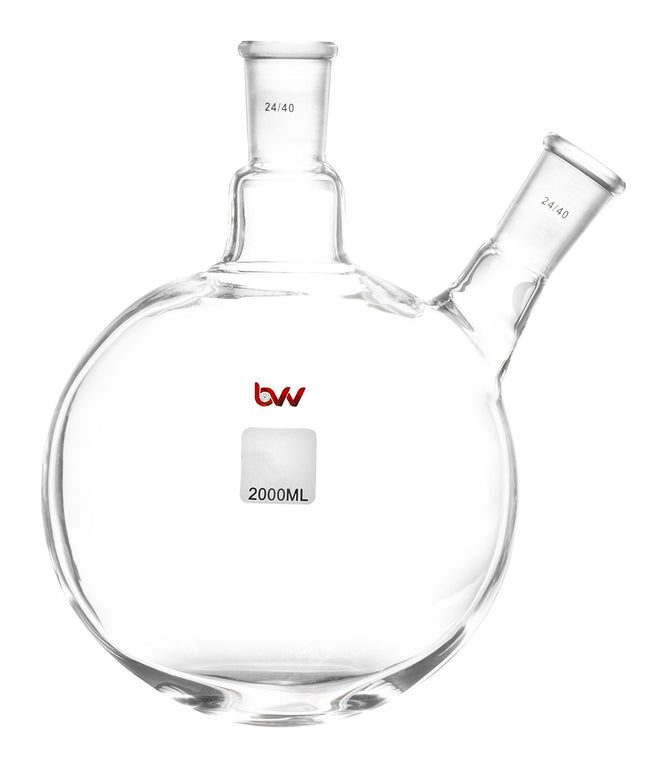
Double Neck Round Bottom Flask
Double Neck Round Bottom Flask Double Neck Round Bottom Flasks can be used for a variety of applications such as capturing and collecting material and also used for boiling off material through distillation. These flasks are double neck with a ground 24/40 joint and require the application of vacuum grease to the ground surface when using the flasks in a vacuum application. The second neck of this flask can also be used for a thermometer port or for introducing material into the flask with a glass funnel. When laying these flasks down it is always recommended to use a cork stand for the flask to prevent breakage and keep the flask upright. Sizes Available: 500ml - 24/40 Ground Joint 1000ml - 24/40 Ground Joint 2000ml - 24/40 Ground Joint *Notice to customers: All units are inspected for broken glassware or parts before leaving BVV™. If the unit arrives damaged (this does not include minor imperfections or scuffs in glassware), the customer MUST contact BVV™ within 72 hours from carrier delivery to file a claim. If the customer DOES NOT contact BVV™ within 72 hours from carrier delivery, then BVV™ cannot issue any replacement(s) or compensation for the item; a new purchase will need to be made for a replacement. **Glassware Safety Disclaimer: BVV™ is not responsible for failure of glassware which must be inspected before and after every use because it may eventually develop imperfections or damage through normal usage, mishandling, and stress caused by temperature variations. If an imperfection or damage is noted while inspecting the glassware DO NOT use the glassware because it can fail causing bodily harm or damage to the surrounding area.**
$54.54 - $76.92
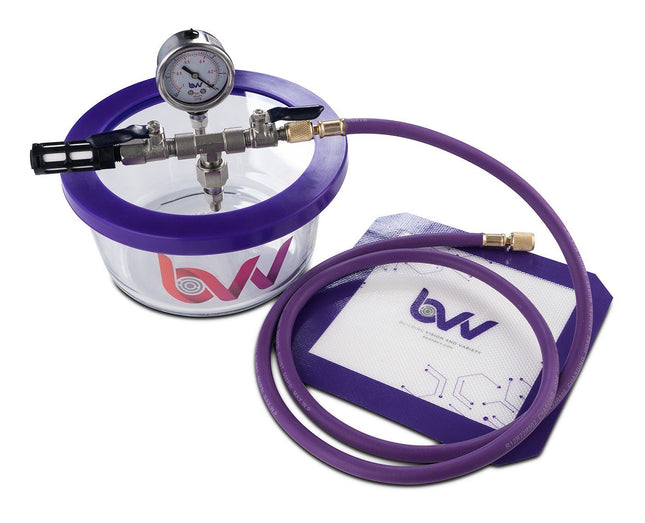
1.75 Quart Pyrex Vacuum Chamber
BVV 1.75 Quart Pyrex Vacuum & Degassing Chamber (Comes with 2 Year Limited warranty) This is a complete BestValueVac® vacuum chamber setup designed built and 100% tested in Naperville, Illinois. Pyrex chambers have a glass body to the chamber, giving a better view of the inside. With our unique patent pending gasket design (Patent #9475627) this chamber is sure to last 10,000 uses with proper care and maintenance. The gasket itself is reversible (doubling the life of our system) allowing customers to instantly take it off and flip it over. No adhesives are used! Our simple gasket design even allows you to place the lid on the chamber somewhat off center and still pull a full vacuum. This is a feature that most other vacuum chambers do not offer. The maximum allowed temperature of this chamber is 160f. The components of this chamber are rated at higher temperatures however as a vacuum vessel we limit maximum operational temperature to 160f. Every chamber is tested prior to shipping to lose no more than 2.5Hg/24hrs. -Please Refer to these charts for vacuum specifications at altitude and conversions: Vacuum at Altitude Chart Vacuum Conversion Chart Key Features: Pyrex Glass Vessel Highly Durable and Reversible Silicone Gasket Glycerin filled vacuum gauge User friendly vacuum connections that fit most vacuum pumps on the market 50 Micron Air filter for reducing airborne contaminants when releasing the vacuum Silicone vacuum pad 5' of vacuum rated HVAC hose to pull a vacuum. Specifications: Chamber Material Pyrex Glass Gasket Material Silicone Lid Material Polycarbonate Internal Dimensions (ID) 3" Tall x 6.75" Diameter Drafting Downwards Vacuum Gauge (Glycerin Filled) InHG (0)-(-30) Manifold Connections 1/4" SAE and 1/4" FNPT Temperature Rating 150°F (65°C) Additional Included Items 5' Purple Vacuum Rated HVAC Hose Platinum Cured Silicone Pad Black 50 Micron Air Filter Compatibility Explanation: • BestValueVac® Chambers are not compatible with stabilization resin (i.e. Cactus Juice™, Gator Venom™, Minwax™ etc.), alcohol, ethanol, acetone and acrylic based monomers or polymers.The lid may only be cleaned with soapy water.• ShatterVac® chambers are not compatible with stabilization resin (i.e. Cactus Juice™, Gator Venom™, Minwax™ etc.), acetone, acrylic based monomers or polymers. The lid may be cleaned with soapy water and low strength cleaning agents.• GlassVac® chambers are compatible with all solvents and stabilization resins. We only recommend and warranty GlassVac® chambers for resin infusion and wood stabilization. The lid may be cleaned with any solvent or cleaning agent. See FAQ at the top for product safety warnings. Pump Warranty Information: Customers using solvents such as stabilization resins (MinWax™, Gator Venom™ etc.), alcohol and other polar solvents must use the vacuum pumps in conjunction with a cold trap for evacuations in excess of 5 minutes. (Exludes Cactus Juice™)•If the consumer is using the pump for prolonged periods of time exceeding 5 minutes we require that a cold trap is used or the pump warranty is void.•These stabilization resins have the ability to break down the internal components of the pump that are plastic resulting in a seized motor voiding all warranties. •When evacuation exceeds 5 minutes these solvents begin to vaporize and then re-condense in the vacuum pump reservoir. Once enough solvent re-condenses in the pump displacing the oil the plastic internal components may begin to warp, melt or seize. The use of a cold trap will condense the vapors prior to making their way to the vacuum pump preventing pump damage due to excessive use. Furthermore, Minwax Wood Hardener™ is not to be used with any vacuum pumps, EVER. (A seized motor will result within the first use.)•To prevent these issues from happening to your process, change the Oil after each vacuum pump use, Even if the use time is only 5min. For shipping info including Import/Export details visit our Shipping link at the bottom of the page.
$111.88
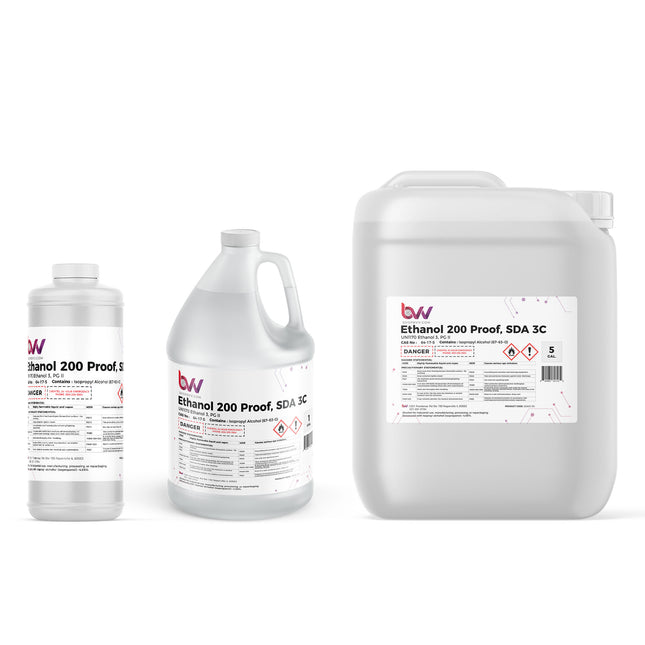
SDA-3C (100% ABV) Lab Grade
Ethanol 200 Proof, SDA 3C Contains: Isopropyl Alcohol ~4.69% 100% AVB (alcohol by volume) HAZMAT ITEMS ARE NON-REFUNDABLE. ALL SALES ARE FINAL Specially Denatured Alcohol, 3C is a mixture of 200 proof grain ethanol mixed with just under 5% isopropyl alcohol. Its laboratory grade and is used for scientific applications, perfume, reagent/solvent, personal care products, and research and as and as a fuel for certain types of lamps and burners. The term "200 proof" refers to the alcohol's strength, which is equivalent to 100% alcohol by volume (ABV). This means that there is no water or other substances present in the alcohol, making it very pure and highly concentrated. Chemical Formula: C2H5OH Molecular Weight: 46.069 CAS Registry Number: Ethanol 64-17-5 Isopropyl Alcohol 67-63-0 Appearance Colorless Liquid Odor: wine-like, pungent Density 0.78945 g/cm3 @ 20 °C Boiling Point: 78.23C/172.81F Solubility in water: Miscible GHS Pictograms: GHS Signal Word: Danger GHS Hazard Statements: H225, H319, H360D GHS Precautionary Statements P210, P233, P240, P241, P242, P305+P351+P338 UN Identification Number: 1170 Proper Shipping Name: Ethanol Transport Hazard Class: 3 Packing Group: II DOT Placard: Ethanol 200 Proof, SDA 3C Certificate of Analysis (COA) Ethanol 200 Proof, SDA 3C Safety Data Sheet (SDS)
$20.98 - $3,286.40
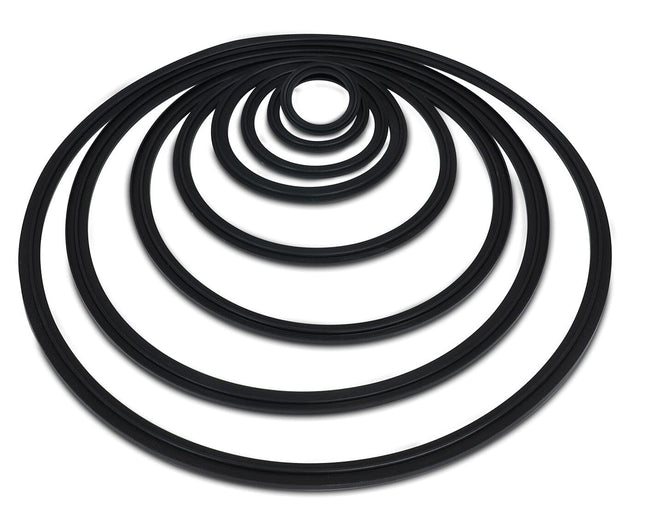
EPDM Tri-Clamp Gaskets
EPDM Tri-Clamp Gaskets EPDM Tri-Clamp gaskets are the preferred choice of material for brewing and similar alcohol based applications. EPDM Gaskets offer a low temperature rating and have better physical properties than Viton gaskets; the best part is that they cost less than Viton and provide the same chemical resistance to many alcohols Note: EPDM is not recommended for use with hydrocarbons Key Features: Low temperature range Low costs Better compressibility and springiness Excellent resistance to alcohols Good tear resistance Good abrasion resistance FDA CFR 177.2600 – Rubber and Rubber-Like Material for Repeated Use/Contact with Food. FDA CFR 177.1550 – Fluorocarbon Resins for Repeated Use/Contact With Food, Dairy & Pharmaceutical Products. Sizes Available: 1.5" 2" 3" 4" 6" 8" - easy on flanged 10" - easy on flanged 12" - easy on flanged Technical Specifications: Material EPDM Color Black Connection Type Tri-Clamp Conformance FDA Compliant / Meets 3A Standards Thermal Properties: -Low Temperature Range -55°F -Minimum for Continuous Use (Static) -40°F -Brittle Point -55°F -High Temperature Range +275°F -Maximum for Continuous Use (Static) +275°F Gas Permeability Excellent Durometer or Hardness Range 65 Shore A Tensile Strength Range 200-3500PSI Elongation Range (%) 350-650% Abrasion Resistance Excellent Tear Resistance Excellent Resilience / Rebound Good Thread Style Female Chemical Compatibility: Butane D - Severe Effect Propane (liquified) D - Severe Effect Alcohols: -Amyl A - Excellent -Benzyl B - Good -Butyl B - Good -Diacetone A - Excellent -Ethyl A - Excellent -Hexyl C - Fair -Isobutyl A - Excellent -Isopropyl A - Excellent -Isopropyl A - Excellent -Methyl A - Excellent -Octyl C - Fair -Propyl A - Excellent No more than a -40 F operating temperature should be used with EPDM. BVV is not responsible if incompatible chemicals, solvents, or operating temperatures are used in the user's system.
$1.40 - $71.32
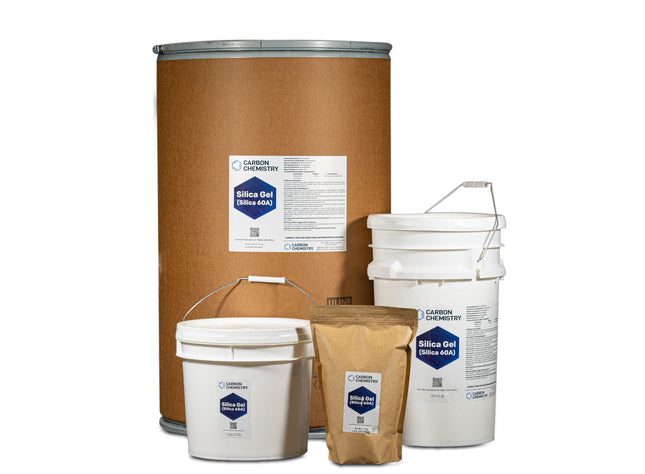
Carbon Chemistry SD (Silica 60A)
Carbon Chemistry SD (Silica Gel 60A) A high-purity silica powder media optimized for precise separation and purification processes. This carefully engineered adsorbent provides exceptional control in chromatographic applications and targeted compound removal. Its optimized surface chemistry makes it particularly effective for polar compound separation and analytical-grade purification needs. This powder is used often in Column Chromatography as the stationary phase. It is mixed together with the solvent in the column making a slurry, then letting the solvent drain leaving the Silica sitting evenly in the column. Silica Gel helps space out or separate the fractions of compounds being passed through the stationary phase. Carbon Chemistry Silica Gel 60A, 200-400 MESH - SDS Note: Bulk Bags and Bulk sizes are non-stocked items and will be ordered as needed and carry a several week lead time and require a forklift or pallet jack
$139.85 - $18,180.07

Color Remediation Column CRC
Color Remediation Column For BHO Extraction Color Remediation Columns are secondary columns used as a filtration cartridge for hydrocarbon and ethanol extraction systems. Removing impurities from extracted oils is aided by filter media, packed in the column above a triple filtration stack. The CRC features a bypass path, allowing the operator to skip the column in case of a clog. What simplifies the color remediation process is bundling the cartridge with the filter media. We have paired the unit with suggested media, supplied in the proper ratio, and a standard operating procedure. This makes filtration easy, allowing you to get it right the first time without having to guess. The CRC is a 4" x 12" spool with triple filter plates and rack mounting. Choose 1/4", 3/8" or 1/2" flares. This CRC Kit Includes: Color Remediation Column Rack Mounting Brackets 100 pack of 8 and 20-micron filter papers 1000g of Activated Alumina 1000g of Silica 60 1000g of Pure-Flo® B80 1000g of PurifiDE XG-12 Instruction Manual
$1,908.91 - $2,402.57
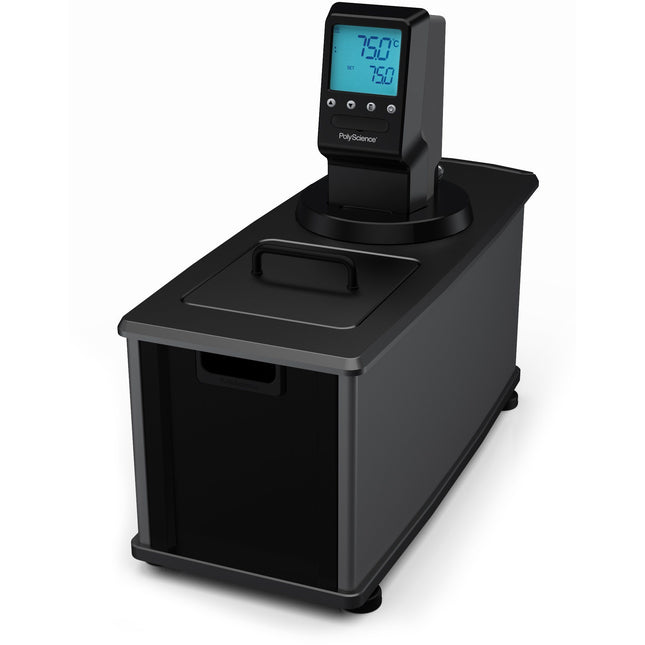
Polyscience 7 Liter MX Heated Circulator
Polyscience 7 Liter MX Heated Circulator Key Specifications Description 135, 7 L Htg. Circulator Controller Type MX Display 3.25" LCD Languages Supported English Temperature Stability °C Ambient +10° to 135° Temperature Stability °C ±0.07° Temperature Calibration Capability 1-point Working Access (L x W x D) (cm) 15.7 x 14.2 x 12.7 cm Pump Type Pressure Flammability Class (DIN 12876-1) I (NFL) Working Temperature Range °F Ambient + 20° to 275° Working Temperature Range °C Ambient +10° to 135° Reservoir Capacity (gallons) 1.85 Reservoir Capacity (liters) 7 Reservoir/Tank Material Stainless Steel Reservoir Cover Included DuraTop Yes LidDock Yes Working Access (L x W x D) (inches) 6.18 x 5.59 x 5 in Working Access (L x W x D) (cm) 15.7 x 14.2 x 12.7 cm Temperature Stability °F ±0.13° Temperature Stability °C ±0.07° Display 3.25" LCD Display Resolution (Set) 0.1 Display Resolution (Read) 0.1 Pump Type Pressure Pump Speed One Process Connections 1/2" O.D. Barbed Tubes Flammability Class (DIN 12876-1) I (NFL) Over-Temperature Protection / Failsafe Heater Control Yes Low Liquid Level Protection Yes Reservoir Drain Yes Cooling Coil Yes Maximum Ambient Temperature °F 95° Maximum Ambient Temperature °C 35° Overall Dimensions (L x W x H) (inches) 19.6 x 8.7 x 17.2 in Overall Dimensions (L x W x H) (cm) 49.9 x 22.1 x 43.7 cm Environmental Compliance RoHS, WEEE Shipping Weight (pounds) 36.0 Shipping Weight (kilograms) 16.3 Catalog Page Number 60-61 60 Hz Only Part Number MX07H135-A11B Maximum Pressure (psi) 2.3 Maximum Pressure (bar) 0.16 Maximum Pressure Flow Rate (gpm) 3.60 Maximum Pressure Flow Rate (l/min) 13.5 Included Hardware Fitting Kit for External Applications Heater Wattage 1100 Electrical Requirements (VAC/Hz/Ph/A) 120/60/1/10 Regulatory Approvals ETL Key features: Large, universal icon and English display On-screen prompts Single-point calibration capability Certifications Regulator Approvals: ETL Operator's Manual
$3,216.47
You have seen 288 out of 1662 products
















































